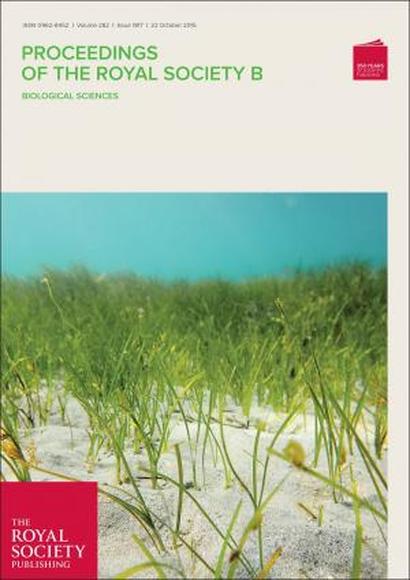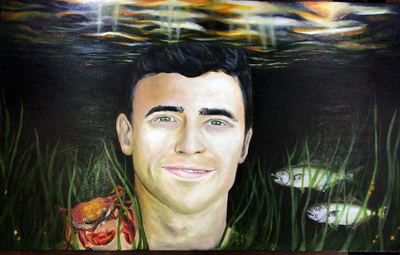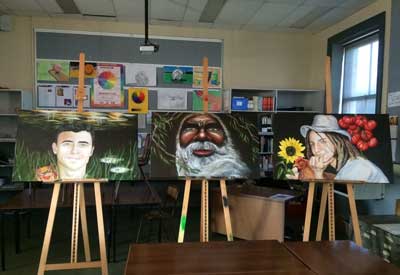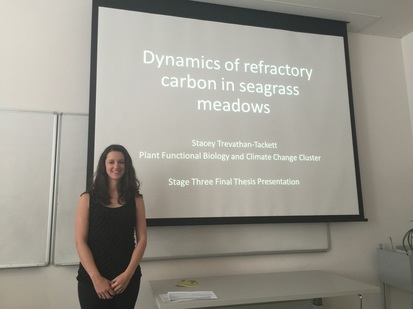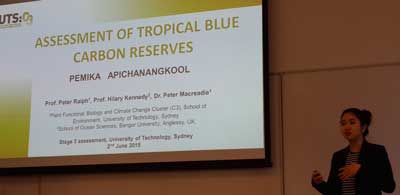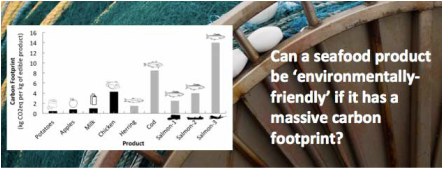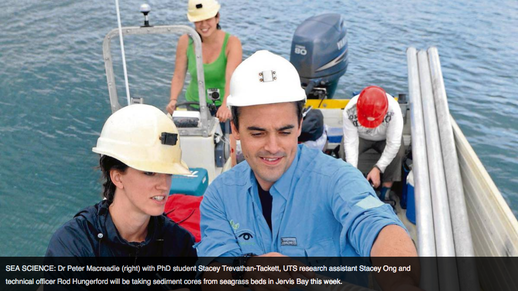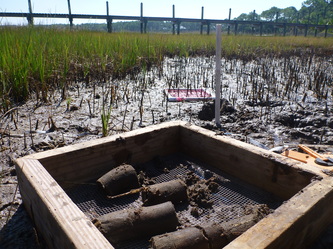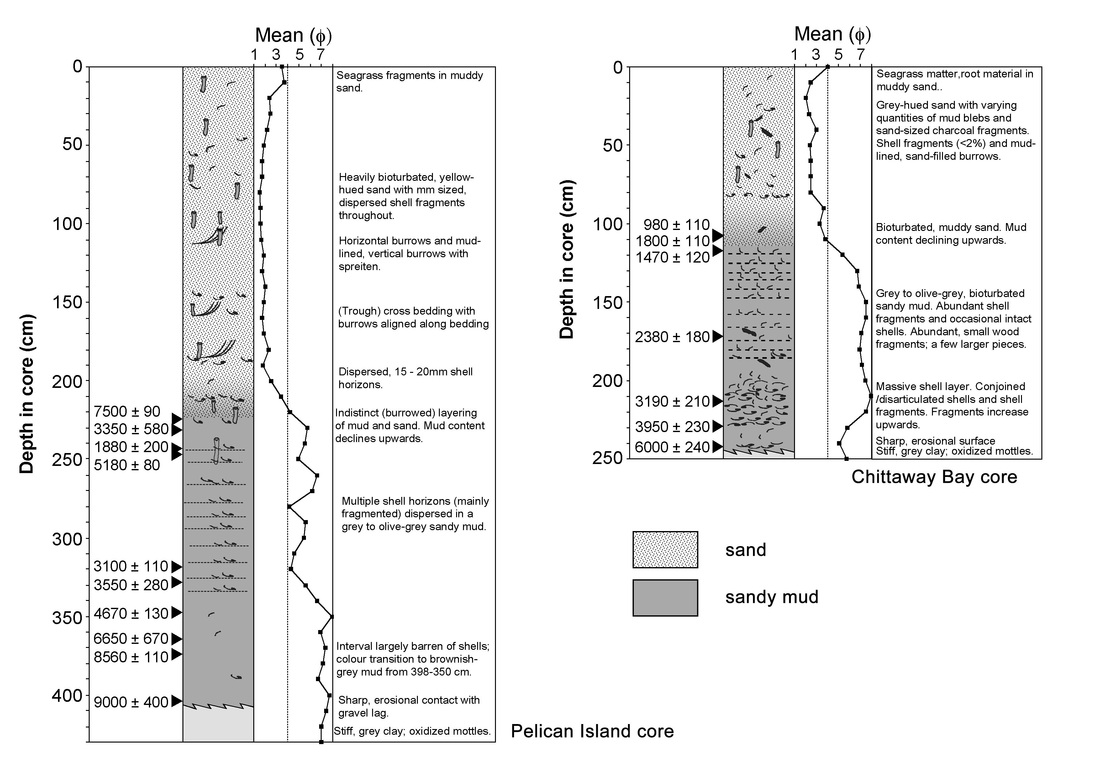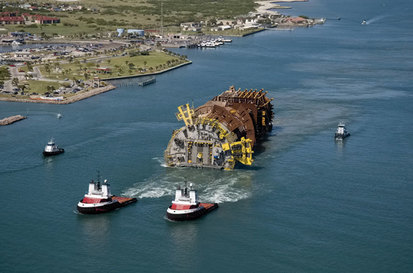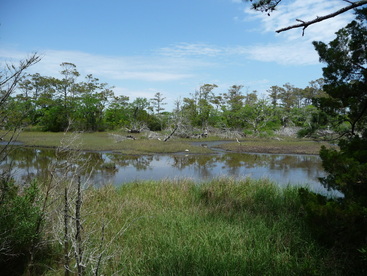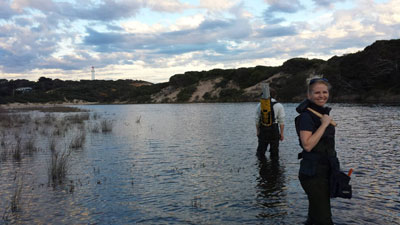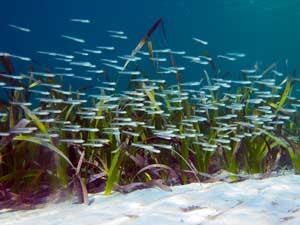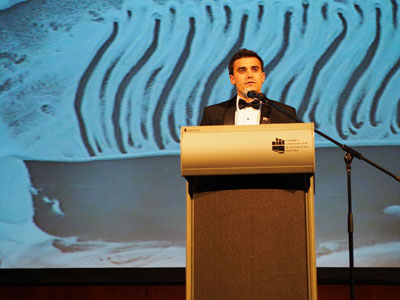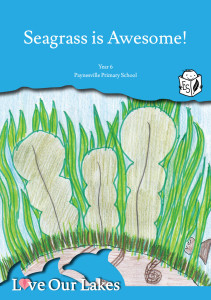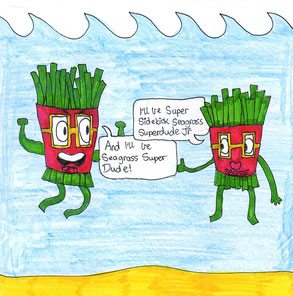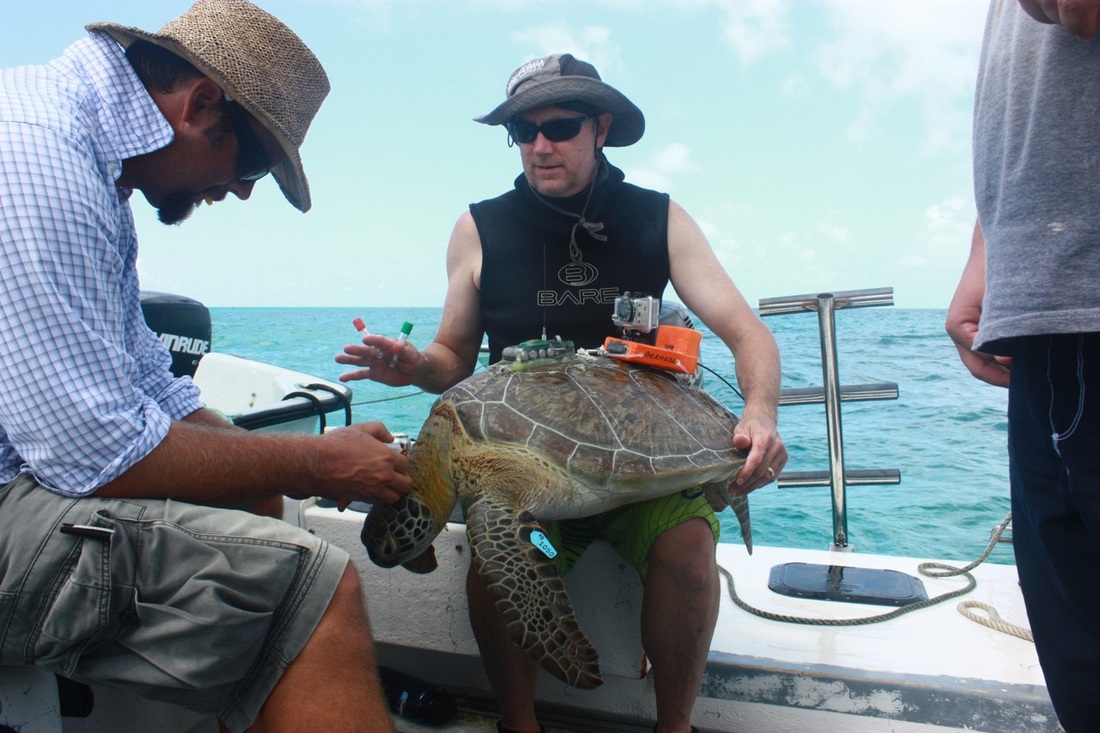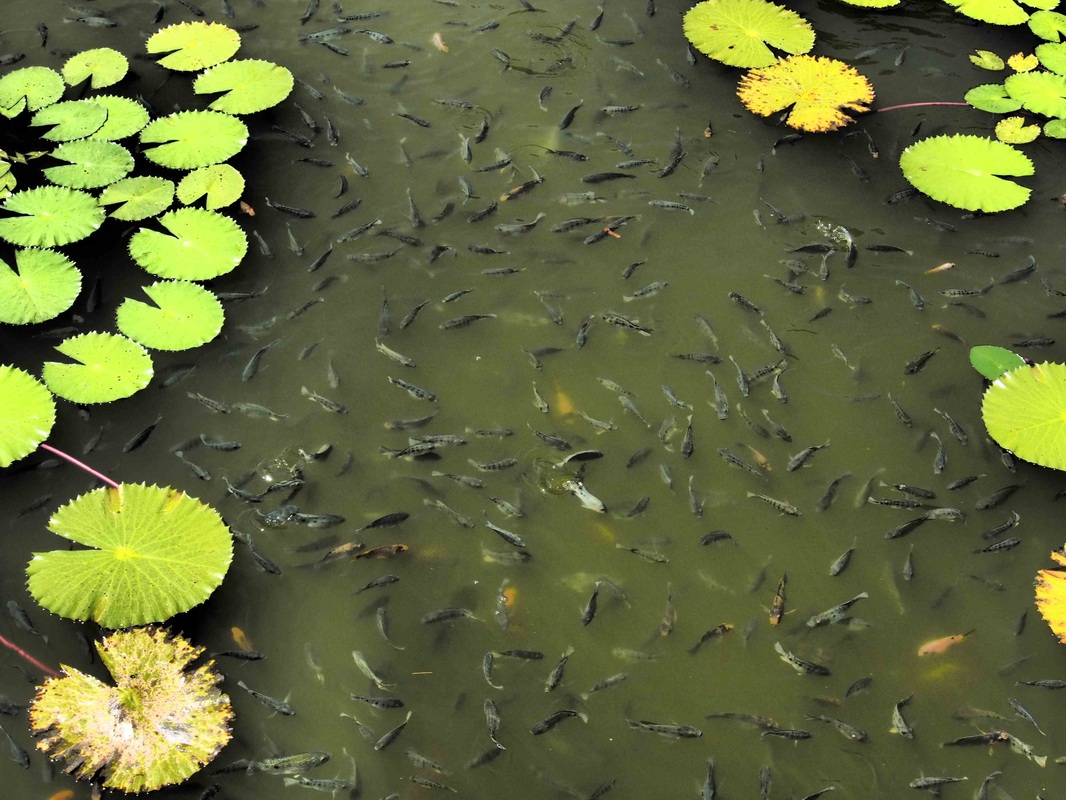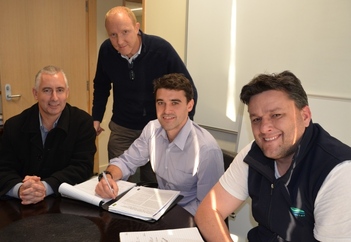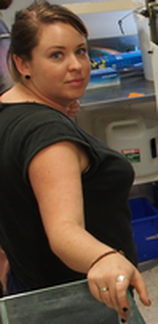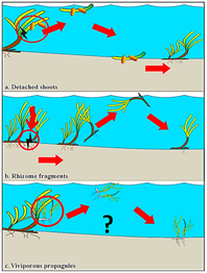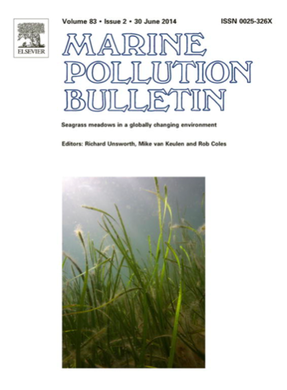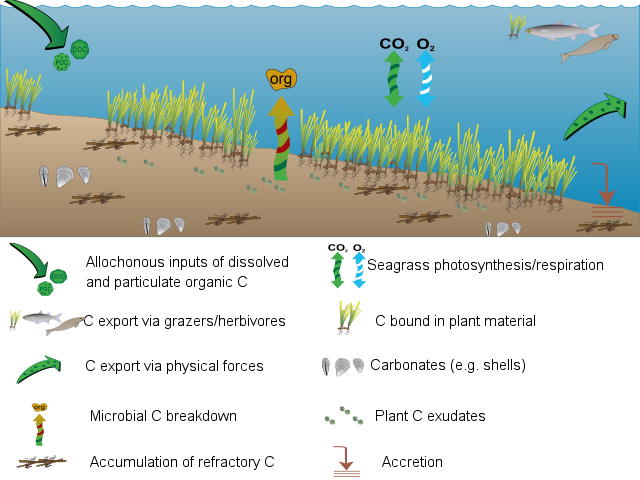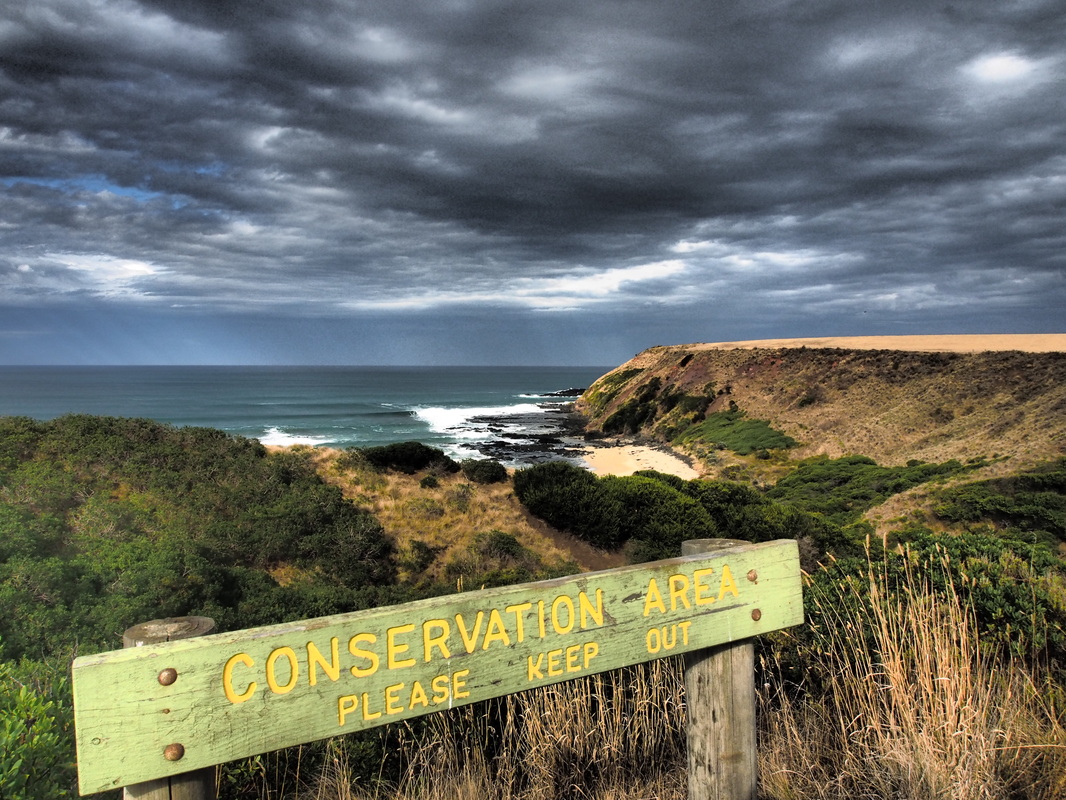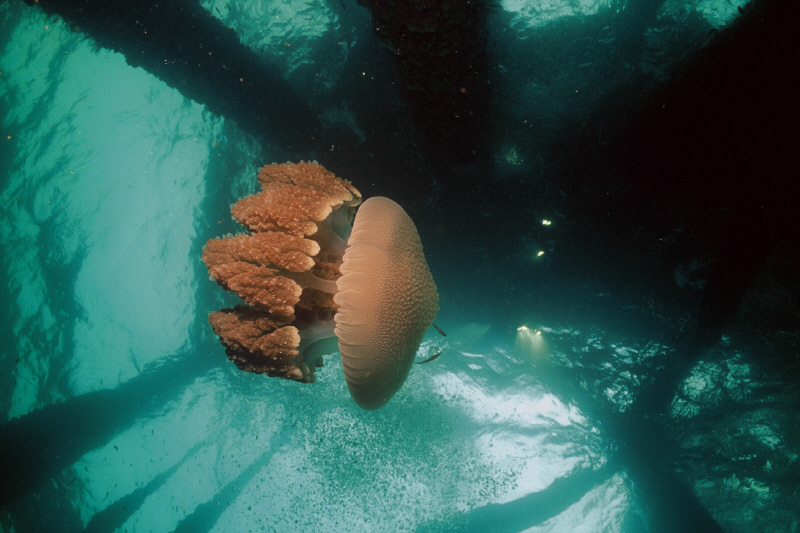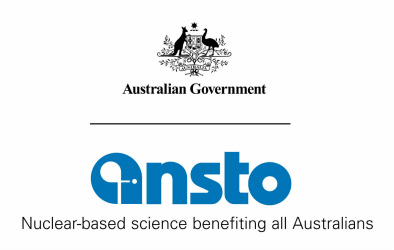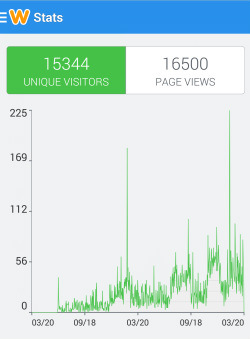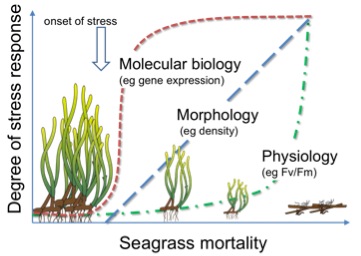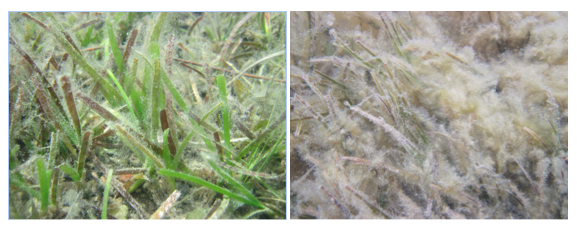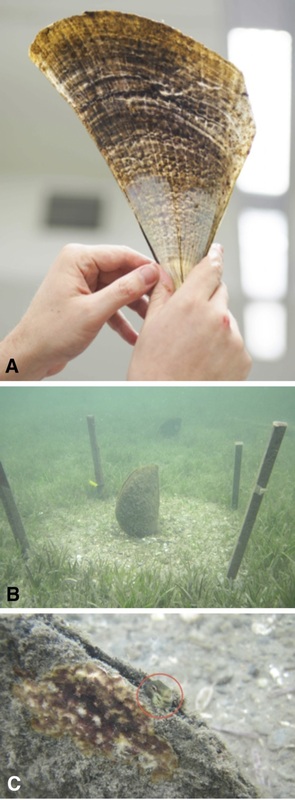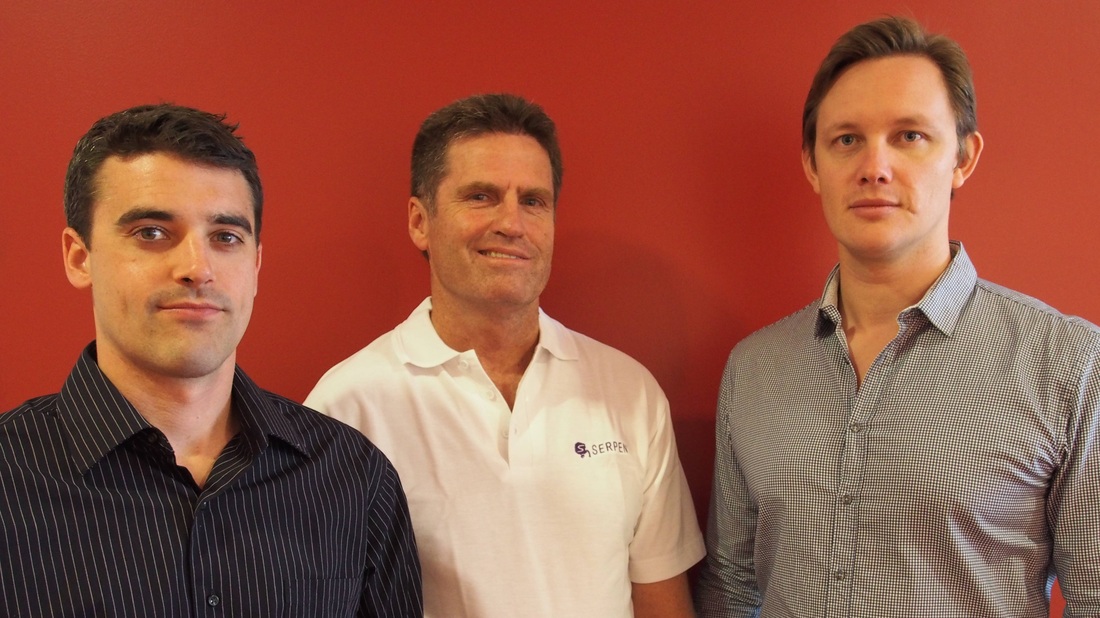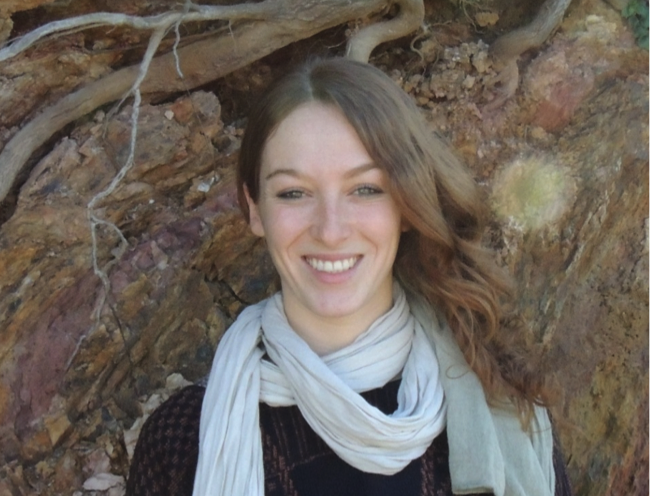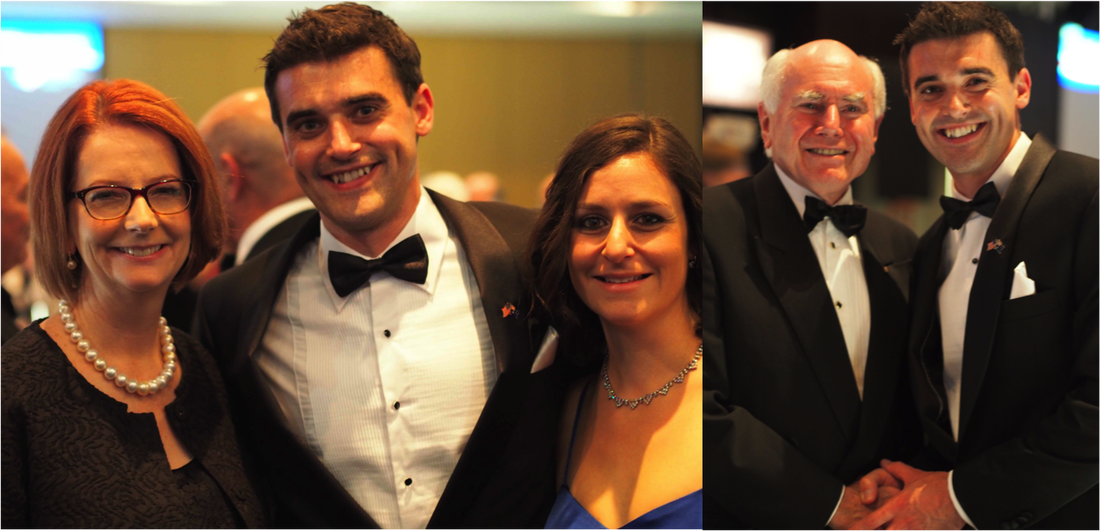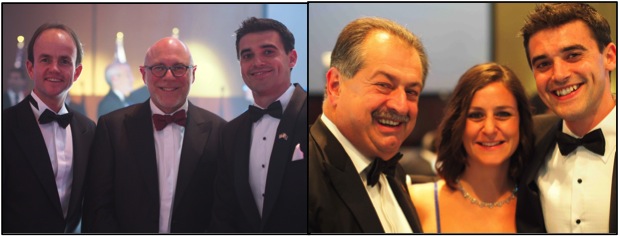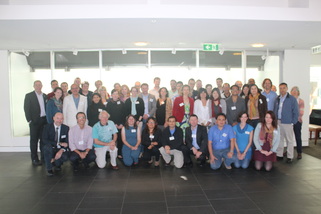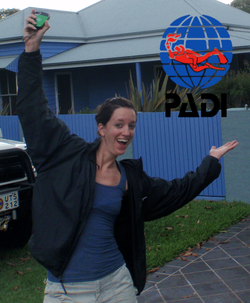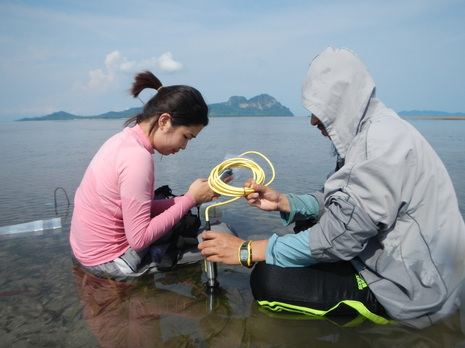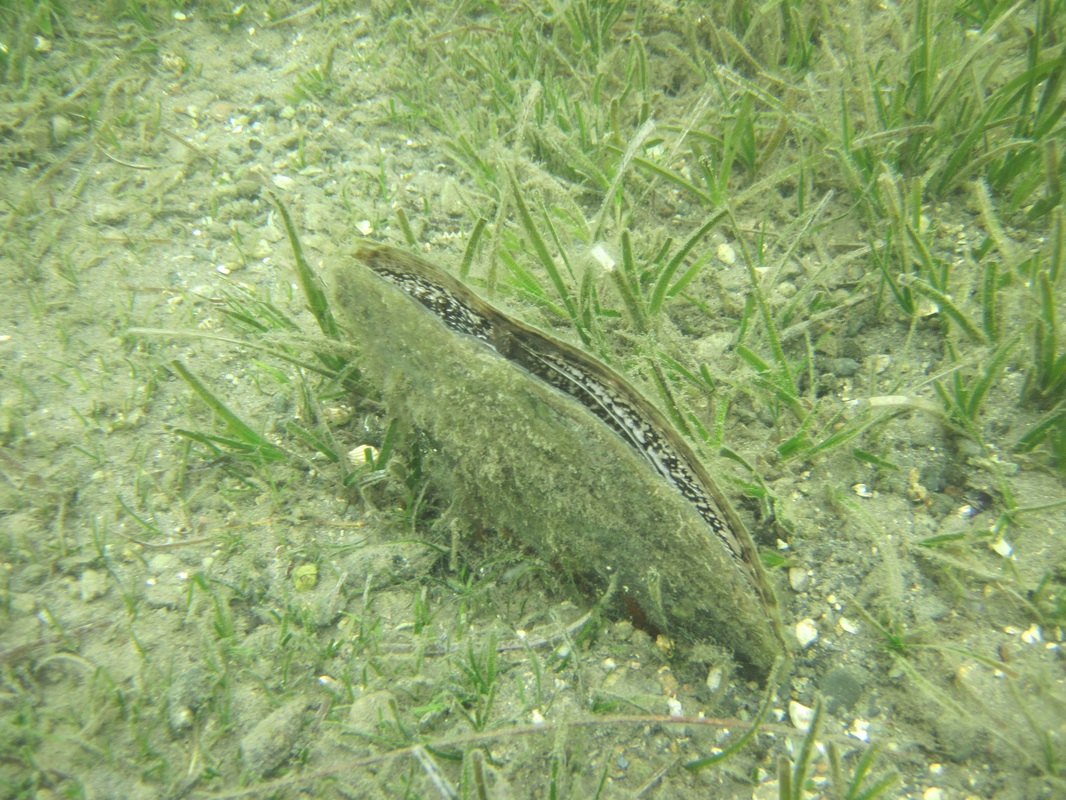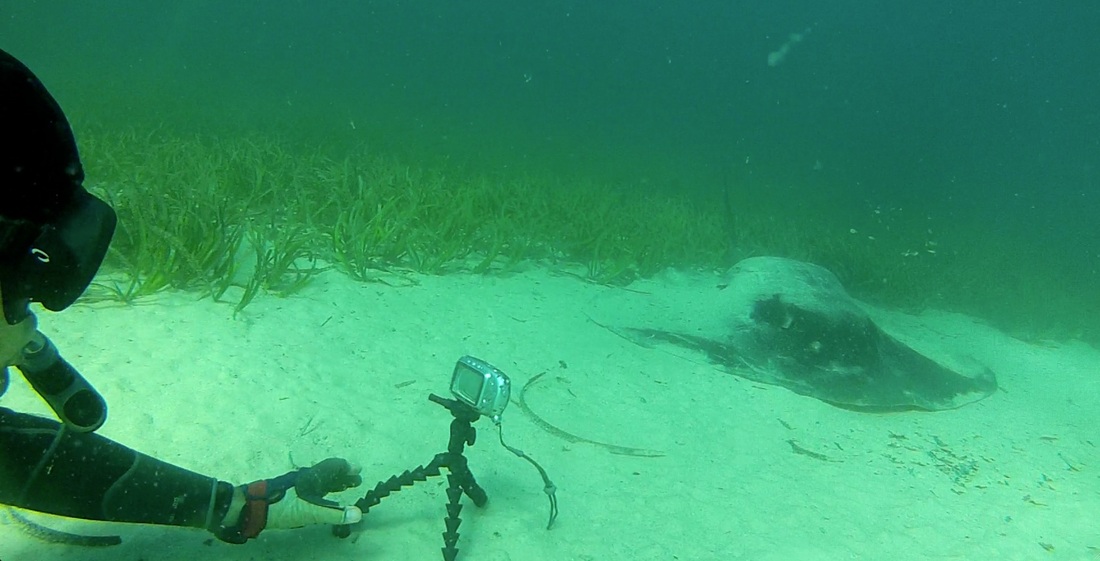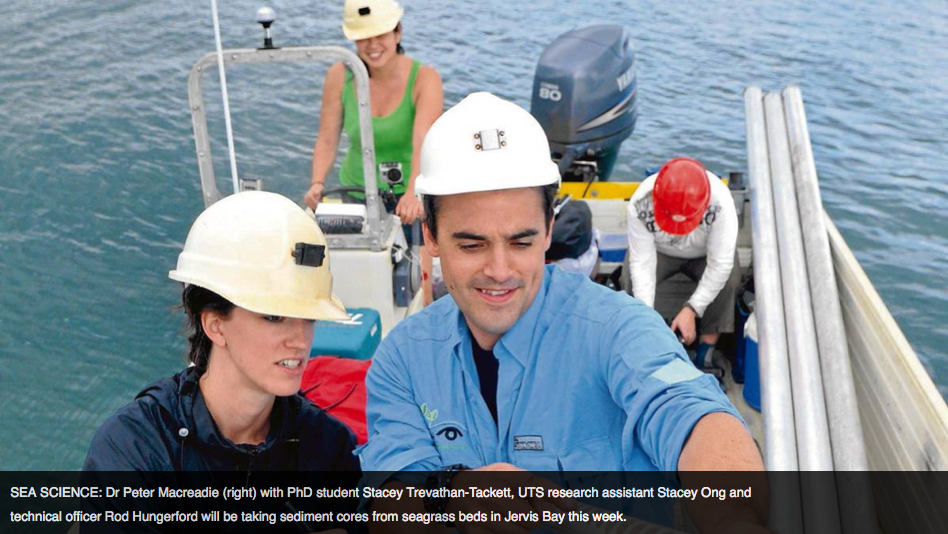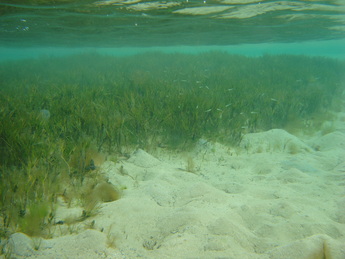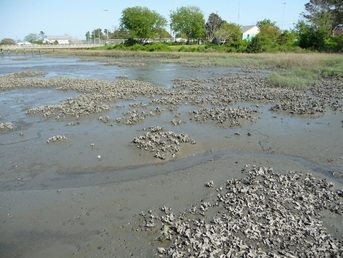For regular news, please check out my Twitter feed: @PeterMacreadie
Welcome to new lab member: Quinn Ollivier - PhD candidate
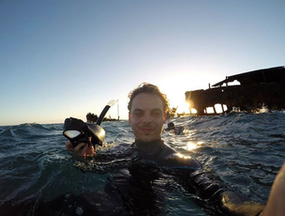
It is an absolute pleasure to have Quinn Ollivier join the lab as a PhD candidate.
Quinn has a background is in whole ecosystem ecology and biogeochemical cycling, specifically trophic cascades, nutrient impacts on community structure of food webs, and carbon cycling in blue carbon ecosystems with an emphasis on the role blue carbon ecosystems play in CO2 mitigation. Quinn completed a BSc in Marine Biology and was awarded the Dean's Merit Award at UTS. In 2015 he completed his Honours in Environmental Science studying algal halos in coral reef ecosystems.
Quinn will be working with the Corangamite Catchment Management Authority (CCMA; co-supervisor Chris Pitfield) during his PhD to investigate opportunities for blue carbon offsetting within the Corangamite region.
Welcome Quinn!
Quinn has a background is in whole ecosystem ecology and biogeochemical cycling, specifically trophic cascades, nutrient impacts on community structure of food webs, and carbon cycling in blue carbon ecosystems with an emphasis on the role blue carbon ecosystems play in CO2 mitigation. Quinn completed a BSc in Marine Biology and was awarded the Dean's Merit Award at UTS. In 2015 he completed his Honours in Environmental Science studying algal halos in coral reef ecosystems.
Quinn will be working with the Corangamite Catchment Management Authority (CCMA; co-supervisor Chris Pitfield) during his PhD to investigate opportunities for blue carbon offsetting within the Corangamite region.
Welcome Quinn!
From sink to source: seagrass disturbance releases ancient carbon
|
By Marea Martlew
An unusual event that took place in Australia 50 years ago has given scientists rare insight into the fate of ancient carbon locked away in seagrass habitats when they are disturbed or destroyed. The study provides new evidence, that when seagrass ecosystems are disturbed the “blue carbon” that has been locked away in their sediments for thousands years disappears, and may be released into the atmosphere with potential major global warming consequences. While the results of the study, published in The Proceedings of the Royal Society B highlight the slow recovery rates for disturbed seagrass habitats, they also provide promising evidence that restoring seagrass meadows can offset carbon emissions and help mitigate climate change impacts. The study also reveals significant differences in the microbial community associated with disturbed and undisturbed habitats. Journal Reference: Proceedings of the Royal Society B, DOI: 10.1098/rspb.2015.1537 Read more here: ABC News: Damaged seagrass meadows release ancient carbon New Scientist: Seagrass gardens are needed to cap the ancient carbon bomb in the oceans |
Australian Academy of Science backs seagrass blue carbon research
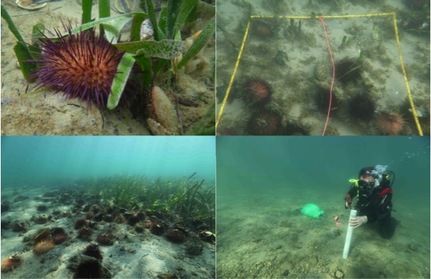
Thank you to the Australian Academy of Science for supporting our research proposal 'Can overgrazing of seagrass destroy ancient carbon stocks' through the 2016 Thomas Davies Research Grant for Marine, Soil and Plant Biology.
Nooramunga Marine & Coastal Park in Victoria is home to one of Australia's largest meadows of Posidonia australis seagrass (2,123 hectares), and has recently been discovered as a hotspot for carbon sequestration (Macreadie et al. 2015). However, an outbreak of sea urchins has occurred within the Park, causing extensive loss of seagrass due to over-grazing, and raising concerns that Nooramunga's seagrass carbon stocks - which have taken thousands of years to accumulate - could be lost.
In this project we seek to: (1) determine the rate of extent of seagrass loss due to urchin overgrazing; (2) measure the impacts of seagrass loss on carbon stocks; and (3) assess the likelihood and timeframes for potential seagrass recovery.
Nooramunga Marine & Coastal Park in Victoria is home to one of Australia's largest meadows of Posidonia australis seagrass (2,123 hectares), and has recently been discovered as a hotspot for carbon sequestration (Macreadie et al. 2015). However, an outbreak of sea urchins has occurred within the Park, causing extensive loss of seagrass due to over-grazing, and raising concerns that Nooramunga's seagrass carbon stocks - which have taken thousands of years to accumulate - could be lost.
In this project we seek to: (1) determine the rate of extent of seagrass loss due to urchin overgrazing; (2) measure the impacts of seagrass loss on carbon stocks; and (3) assess the likelihood and timeframes for potential seagrass recovery.
Being the subject of a painting...I'm totally flattered to have been pained by St Joseph's College Geelong student, Antoine Saleh. When I asked him why on earth he would paint me he said:
"As I have a strong interest in nature and science, I am doing many maths and science subjects as school . To keep a balance with my subjects, as a year 11 student, I decided to do year 12 biology and Year 12 Studio arts. Throughout my Studio arts folio the theme I focused on was “Humans and Nature Bond” trying to capture the unique connection between Individuals and their environment. I met many people throughout the experience including, an aboriginal cultural heritage officer, Permaculture enthusiasts, “hippies”, a nudist, a florist, and yourself (Marine Ecologist). I focused on three main subject matter on how people are connected to their environments; culturally, spiritually, and through passion/occupation. Earlier in the year when I went diving a lot, I came across your video on YouTube of you snorkelling around Point Lonsdale. After watching your videos and seeing your interesting name (Dr Seagrass), I did some research where I came across your website. You seemed extremely passionate in what you do which inspired me to produce a painting of you." Thanks Antoine. I'm totally blown away. A+ mate! |
New paper in Nature Climate Change: Predators help protect carbon stocks in blue carbon ecosystems
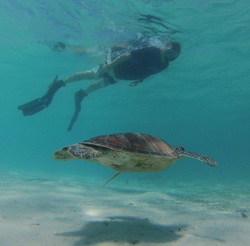
If you knew that there was zero percent chance of being eaten by a shark would you swim more often? Rhetorical questions aside, the fear of being eaten has a profound influence on other animals too, and the way they use marine environments.
Turtles, for example, fear being eaten by sharks and this restricts the movement and behaviour of entire populations. But when the fear of being eaten dissipates, we see that turtles eat more, breed more, and go wherever they please. It might sound like turtle paradise, but in an article published today in Nature Climate Change we show that loss of ocean predators can have serious, cascading effects on oceanic carbon storage and by extension, climate change.
Associate media (selected):
Turtles, for example, fear being eaten by sharks and this restricts the movement and behaviour of entire populations. But when the fear of being eaten dissipates, we see that turtles eat more, breed more, and go wherever they please. It might sound like turtle paradise, but in an article published today in Nature Climate Change we show that loss of ocean predators can have serious, cascading effects on oceanic carbon storage and by extension, climate change.
Associate media (selected):
- The Conversation: Ocean predators help protect our planet's thermostat
- Deakin media: Shark alert: ocean predators protect humans from climate change risks
- The Guardian: Shark culling could indirectly accelerate climate change, study warns
- PhysOrg: Jumping the shark: Scientists say predators protect marine ecosystems, blue carbon
- SBS: Culling sharks may make climate change worse: study
PhD student Stacey Trevathan-Tackett tells us what she's been doing for the past 3 years (and totally nails it...)"The refractory characteristics of carbon-containing compounds is one of the main factors that can influence the sequestration and storage of carbon in blue carbon ecosystems. The aim of this thesis was to unravel the processes and factors that influence, and even optimise, the preservation of refractory carbon in seagrass meadows beginning with the refractory carbon in live plants and following it through decomposition to storage in the sediments."
Well done Stacey! |
Multiple wins for PhD student Brooke Sullivan
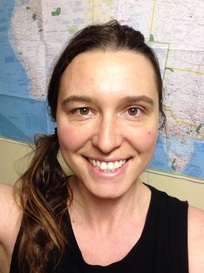
Well she's only been in the country a few months and already she has taken out two awards and a travel grant!
At the Australian Marine Science Association Conference in Geelong she won the Ernest Hodgkins Estuary Research Student Prize for her oral presentation on the impact of wasting disease (Labyrinthula spp.) on seagrass meadows.
Brooke received an ABRS travel grant to present her work on 'The taxonomy and biogeography of Australia's endemic Heterozostera (eelgrass)' at The Australian Society for Phycology and Aquatic Botany Conference' in 2015.
And last but not least, Brooke has received the Margaret Catto Award to support her thesis research on seagrass restoration.
At the Australian Marine Science Association Conference in Geelong she won the Ernest Hodgkins Estuary Research Student Prize for her oral presentation on the impact of wasting disease (Labyrinthula spp.) on seagrass meadows.
Brooke received an ABRS travel grant to present her work on 'The taxonomy and biogeography of Australia's endemic Heterozostera (eelgrass)' at The Australian Society for Phycology and Aquatic Botany Conference' in 2015.
And last but not least, Brooke has received the Margaret Catto Award to support her thesis research on seagrass restoration.
PhD student Alex Thomson a finalist in Fresh Science competition - go Alex!
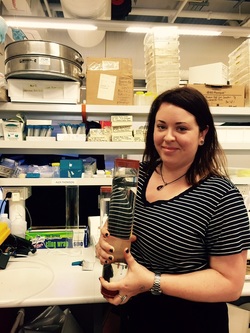
Congratulations to PhD student Alex Thomson who is a finalist in this year's Fresh Science competition
Now more than ever science needs a voice.
Fresh Science is a national competition helping early-career researchers find, and then share, their stories of discovery.
The program takes young researchers with no media experience and turns them into spokespeople for science, giving them a taste of life in the limelight, with a day of media training and a public event in their home state.
Alex will be presenting her research on the impacts of bioturbators on blue carbon over beers at the Three Wise Monkeys Hotel on 31st August 2015.
We're all very proud of you Alex!
Now more than ever science needs a voice.
Fresh Science is a national competition helping early-career researchers find, and then share, their stories of discovery.
The program takes young researchers with no media experience and turns them into spokespeople for science, giving them a taste of life in the limelight, with a day of media training and a public event in their home state.
Alex will be presenting her research on the impacts of bioturbators on blue carbon over beers at the Three Wise Monkeys Hotel on 31st August 2015.
We're all very proud of you Alex!
New paper accepted in Limnology & Oceanography: Can macroalgae contribute to blue carbon? An Australian perspective
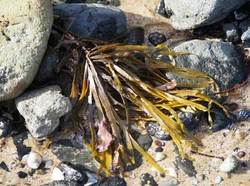
- Macroalgal communities have the largest global extension and the greatest net primary production compared to other coastal habitats, such as mangrove forests, seagrass and saltmarshes.
- Macroalgae have vast quantities of carbon stored in living biomass, but they do not develop their own organic-rich sediments.
- Here we examine whether macroalgal detritus could be relocated to sedimentary habitats thereby acting as a ‘carbon donor’ to ‘receiver sites’ where allochthonous carbon accumulates.
- This paper examines the fate of macroalgal carbon and identifies knowledge gaps that would define the role of macroalgae in marine biogeochemical cycling of carbon.
Authors: Ross Hill, Alecia Bellgrove, Peter I. Macreadie, Katherina Petrou, John Beardall, Andy Steven, Peter J. Ralph
Pemika Apichanangkool giving her PhD dissertation talkSo proud of my PhD student Pemika Apichanangkool giving her final PhD talk. She made a compelling case that eutrophication in Thailand's seagrass meadows is causing loss of blue carbon.
Her research then tested an innovative solution: using artificial seagrass to help facilitate the recovery and maintenance of blue carbon stocks while waiting for natural seagrass recovery. Well done Pemika! |
Study backs seaweed's carbon capturing potential - by Marea Martlew
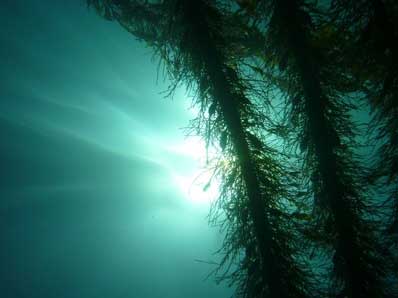
There are great hopes for the potential of coastal plants and seaweeds to store carbon and help counter the effects of climate change and a new study is backing that potential.
Scientists from UTS and Deakin University have carried out the first investigation of how a diverse range of coastal plants and seaweed (macroalgae) can contribute to "blue carbon" stocks, the carbon in leaves, sediments and roots that is naturally captured, or sequestered, by plants in coastal habitats.
The finding, published in the prestigious Ecology journal, that some seaweed species have the capacity to make a significant contribution to coastal carbon capture may better inform projects designed to mitigate against greenhouse gas emissions.
The study forms part of a large coastal carbon accounting project being undertaken by researchers in eight Australian institutions under the CSIRO Marine Geochemistry Coastal Carbon Cluster initiative. The project was co-funded by Deakin University Centre for Integrative Ecology within the School of Life and Environmental Sciences.
Publication details:
Comparison of marine macrophytes for their contributions to blue carbon sequestration.
Stacey M Trevathan-Tackett, Jeffrey Kelleway, Peter Macreadie, John Beardall, Peter Ralph, Alecia Bellgrove Ecology (2015)
Scientists from UTS and Deakin University have carried out the first investigation of how a diverse range of coastal plants and seaweed (macroalgae) can contribute to "blue carbon" stocks, the carbon in leaves, sediments and roots that is naturally captured, or sequestered, by plants in coastal habitats.
The finding, published in the prestigious Ecology journal, that some seaweed species have the capacity to make a significant contribution to coastal carbon capture may better inform projects designed to mitigate against greenhouse gas emissions.
The study forms part of a large coastal carbon accounting project being undertaken by researchers in eight Australian institutions under the CSIRO Marine Geochemistry Coastal Carbon Cluster initiative. The project was co-funded by Deakin University Centre for Integrative Ecology within the School of Life and Environmental Sciences.
Publication details:
Comparison of marine macrophytes for their contributions to blue carbon sequestration.
Stacey M Trevathan-Tackett, Jeffrey Kelleway, Peter Macreadie, John Beardall, Peter Ralph, Alecia Bellgrove Ecology (2015)
A new study has led researchers to call for a review of seafood ‘eco-labels’, which currently exclude consideration of the substantial carbon footprint left by the seafood industry.
In assessing the carbon emissions at every stage of the seafood journey from the ocean to the dinner plate, researchers have previously found that seafood products can have extremely large carbon footprints – up to 14 times the product’s own weight.
“In addition to fuel use in fishing – which often requires travel to the farthest reaches of the oceans – the seafood industry’s carbon footprint is also the result of the energy inputs resulting from the large amounts of feed required to support fish growth in aquaculture. Of course, another key input to seafood carbon emissions is the refrigeration required at all stages of the seafood journey,” said lead researcher Dr. Elizabeth Madin.
The seafood industry has become increasingly interconnected at a global scale, with fish the most traded commodity worldwide. Sustainability ‘eco-labels’ are widespread, but the carbon footprints of seafood products are rarely integrated into assessments of their sustainability by eco-labels, eco-certification, or consumer seafood sustainability guides.
“As a result, many ‘environmentally-friendly’ labeled seafoods in fact have enormous carbon footprints that the consumer may not be aware of,” said Dr. Macreadie, from the University of Technology, Sydney, and Deakin University, Victoria.
“Some seafood products have much lower carbon footprints than others, however, and this is a characteristic that could potentially be selected for by consumers or businesses, such as restaurants, that buy seafood.”
Typically, seafood sustainability standard take into account 1) the level of harvesting pressure and fish stock relative to ‘safe’ levels; 2) the use or exclusion of environmentally harmful fishing practices, and 3) the effectiveness of fisheries’ management systems.
“By including explicit consideration of the carbon footprint of seafood products, seafood awareness campaigns would potentially have a far more powerful impact by not only helping to mitigate specific environmental impacts of each fishery, but by confronting the global scale problem of climate change,” said Dr. Madin.
Elizabeth M.P. Madin; Peter I Macreadie, Incorporating carbon footprints into seafood sustainability certification and eco-labels, Marine Policy 2015.
Read more: HERE
In assessing the carbon emissions at every stage of the seafood journey from the ocean to the dinner plate, researchers have previously found that seafood products can have extremely large carbon footprints – up to 14 times the product’s own weight.
“In addition to fuel use in fishing – which often requires travel to the farthest reaches of the oceans – the seafood industry’s carbon footprint is also the result of the energy inputs resulting from the large amounts of feed required to support fish growth in aquaculture. Of course, another key input to seafood carbon emissions is the refrigeration required at all stages of the seafood journey,” said lead researcher Dr. Elizabeth Madin.
The seafood industry has become increasingly interconnected at a global scale, with fish the most traded commodity worldwide. Sustainability ‘eco-labels’ are widespread, but the carbon footprints of seafood products are rarely integrated into assessments of their sustainability by eco-labels, eco-certification, or consumer seafood sustainability guides.
“As a result, many ‘environmentally-friendly’ labeled seafoods in fact have enormous carbon footprints that the consumer may not be aware of,” said Dr. Macreadie, from the University of Technology, Sydney, and Deakin University, Victoria.
“Some seafood products have much lower carbon footprints than others, however, and this is a characteristic that could potentially be selected for by consumers or businesses, such as restaurants, that buy seafood.”
Typically, seafood sustainability standard take into account 1) the level of harvesting pressure and fish stock relative to ‘safe’ levels; 2) the use or exclusion of environmentally harmful fishing practices, and 3) the effectiveness of fisheries’ management systems.
“By including explicit consideration of the carbon footprint of seafood products, seafood awareness campaigns would potentially have a far more powerful impact by not only helping to mitigate specific environmental impacts of each fishery, but by confronting the global scale problem of climate change,” said Dr. Madin.
Elizabeth M.P. Madin; Peter I Macreadie, Incorporating carbon footprints into seafood sustainability certification and eco-labels, Marine Policy 2015.
Read more: HERE
Paper just accepted in Marine Environmental Research
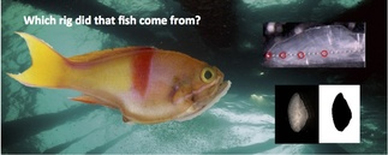
Title: Using otolith microchemistry and shape to assess the habitat value of oil structures for reef fish
Journal: Marine Environmental Research
- Within 5-15 years, 85% of earth’s offshore oil rigs will be due for decommissioning
- ‘Rig-to-reef’ policy argues that rigs should be ‘reefed’ due to their fish habitat value
- We find that fish otolith shape / microchemistry can trace fish residency on rigs
- LA-ICP-MS distinguished ‘home’ structures based on the elements Sr, Ba and Mn
- Otolith properties provides an important tool in the ‘attraction vs. production’ debate
Journal: Marine Environmental Research
Upcoming event (4th March 2015): Showcasing Victoria's Marine Science
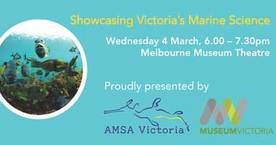
We invite members of the public interested in marine science to join leading Victorian marine scientists for an evening of exciting presentations. Six leading Victorian marine scientists will be sharing inspiring stories marine science research and discovery in Victoria. The evening will be opened by Dr Mark Norman, Director of Science at Museum Victoria. We will be showcasing new underwater footage from Port Phillip Bay captured by Julian Finn at Museum Victoria, followed by short and inspiring marine science presentations:
Marine conservation counts - Tim Allen, Australian Government Department of the Environment
Seaweed superfoods - Dr Alecia Bellgrove, Deakin University
The journey of dolphin discovery - Dr Kate Charlton-Robb, Australian Marine Mammal Conservation Foundation
Bright ideas for blue carbon - Dr Peter Macreadie, University of Technology Sydney
Discovering deep sea biodiversity - Dr Tim O'Hara, Museum Victoria
The sensational Southern Ocean - Dr Jan Strugnell, La Trobe University
Marine conservation counts - Tim Allen, Australian Government Department of the Environment
Seaweed superfoods - Dr Alecia Bellgrove, Deakin University
The journey of dolphin discovery - Dr Kate Charlton-Robb, Australian Marine Mammal Conservation Foundation
Bright ideas for blue carbon - Dr Peter Macreadie, University of Technology Sydney
Discovering deep sea biodiversity - Dr Tim O'Hara, Museum Victoria
The sensational Southern Ocean - Dr Jan Strugnell, La Trobe University
Freshwater wetlands as potential carbon sinks on ABCPeter Macreadie talking about the importance of freshwater wetlands as carbon sinks with Tim Holt on ABC South East NSW
|
Tackling unethical authorship deals in scienceThe research excellence of academics is often measured by the quantity and quality of their scholarly publications. But how do we know that all authors listed on a publication have actually been involved in the research? Check out our new article in The Conversation, led by Prof. Isaac Santos, on 'Tackling unethical authorship deals in science'.
|
Paper published in GeoResJHolocene reconstructions of southern hemisphere environments are rare, yet they are becoming increasingly important for comparing modern-day climate changes against the backdrop of historical natural changes. Our manuscript provides a detailed investigation of the sedimentary responses of an east-coast Australian estuary to local, regional and global environmental changes. We identify significant down-core variation in sediment cores relating to sea-level rise, regional climate change, and human activity. By combining information generated from multiple proxies, we draw together our findings into a conceptual model that describes the development of the estuary; from the early- to mid-Holocene to present (i.e. the past ~9000 years). Our model suggests that sea-level rise and the highly variable (flood/drought) climate system caused the estuary to become periodically constricted from the ocean, which produced cyclic alternation between intervals of fluvially- and marine-dominated conditions. This occurrence is likely to be common to barrier estuaries under the influence of similar climate influences. Analysis of recent (~150 years) sediment demonstrates the strong influence of human activity on sedimentary processes, with urbanization causing significant increases in sediment accumulation rates and mud content.
We are pleased to be publishing our work in GeoResJ - a new open access journal for the earth sciences. Download a copy of the paper here. |
Paper just accepted in PNAS: Should we 'reef' obsolete oil platforms?Offshore oil structures are among the most productive fish habitats in the world (Claisse et al. 2014), but does this mean we should convert them into artificial reefs? In our PNAS letter we discuss some caveats in using fish production data to inform rig-to-reef policy, and provide some recommendations towards a multi-criteria decision framework for providing a more holistic approach to deciding the fate of obsolete oil structures in the oceans.
Journal: Proceedings of the National Academy of Sciences of the USA (PNAS) Authors: Fowler, Macreadie, and Booth |
|
|
Drone workshopDeakin Drone Workshop, 12th-14th of November, 2014
Blue Carbon Lab members Paul Carnell (post-doc) and Carolyn Ewers (PhD candidate) joined Deakin colleagues from the School of Life and Environmental Sciences, Engineering, and IT, along with representatives from Victorian UAS (unmanned aerial systems) Training and Skymation at the Deakin Warrnambool campus to discuss the uses of UAVs (unmanned aerial vehicles, aka “drones”) in research. The group participated in a “fly day” using a drone to map part of the Tower Hill Wildlife Reserve. Later, Victorian UAS Training provided attendees with the opportunity to fly a small drone using the “buddy system” approach, utilizing two tethered control consoles, with the expert pilot on one end and the trainee on the other. On the second and third days, members from each represented group presented and discussed the process of UAV certification, potential applications in research, and projects for collaboration. We are very excited about the possible uses of drones to monitor blue carbon! Check back for updates on drone use in the Blue Carbon Lab. |
Grant success! Carbon sequestration by wetlands: A fresh(water) approach to tackling climate changeThis week we welcomed grant support of $10,000 from the Thomas Davies Research Grant, which is funded through a generous philanthropic bequest from the estate of the late Thomas Lewis Davies to the Australian Academy of Science.
Aims: This project aims to: 1) quantify carbon stocks in wetland soils in south-west Victoria; 2) assess the impact of restoration; and 3) simultaneously develop efficient, rapid and accurate indicators of carbon stocks. Outcomes: This research will: 1) undertake the first assessment of carbon stocks in south-west Victorian wetlands; 2) identify the impact of wetland restoration on those stocks; and 3) identify robust indicators of carbon stocks to enable rapid assessment of other wetlands. Thus, the research will enable natural resource managers and landholders to reliably estimate and enhance their carbon sequestration, adding to the global effort to address climate change. Investigators: Rebecca Lester, Peter Macreadie, and Jan Barton |
|
|
Welcome to new intern, Ellen RochelmeyerEllen is taking a gap year mid-way through her BSc and will be working as an intern with the Blue Carbon Lab. We look forward to having Ellen on the team!
|
Congratulations to Carolyn Ewers for winning best speed talk at Deakin's Science HDR retreat
Carolyn Ewers, a new PhD student in the lab, has taken out the prize for best speed talk at the 2014 Deakin Science HDR retreat.
Carolyn spoke about her upcoming plans to restore degraded blue carbon habitats in Western Port. A very impressive feat given she only arrived in the lab from the USA in August this year. Congratulations Carolyn! |
Seagrass nerds converge at ISBW11 in China
Looking forward to The 11th International Seagrass Biology Workshop in Sanya City, Hainan, China.
The theme of the conference is: “Declining seagrasses in a changing world” (Sounds a bit doomy and gloomy doesn't it?!) with the following symposia: (1) Key Ecological Processes; (2) Ecosystem Vulnerability and Resilience; (3) Biodiversity and Ecosystem Services; (4) Management and Restoration. I'll be giving a talk 'Hot spots and hot moments in seagrass 'blue carbon' science' #ISBW11 #seagrass |
Inspecting potential sites for a 'blue carbon' demonstration project
On 16 October 2014, representatives from UTS, Deakin University, Parks Victoria, Bass Coast Council, the Western Port Seagrass Partnership and Phillip Island Nature Parks inspected potential sites in Western Port Bay for mangrove, saltmarsh and seagrass restoration. Sad to see so much habitat loss, but good to see so much enthusiasm towards fixing the problem.
|
|
New paper: No detectable impact of small-scale disturbance on seagrass 'blue carbon'
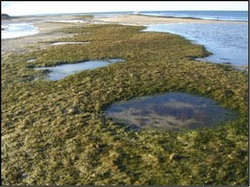 Low tide photo showing holes (‘blow outs’) within seagrass meadows caused by boat anchors; and (inset) collected sediment being extruded for analysis of ‘blue carbon’ content.
Low tide photo showing holes (‘blow outs’) within seagrass meadows caused by boat anchors; and (inset) collected sediment being extruded for analysis of ‘blue carbon’ content.
Journal: Marine Biology
Summary: Carbon that is captured and stored by oceans – termed Blue Carbon – is a rapidly evolving area of research. Seagrasses offset a considerable portion of the world’s greenhouse gas emissions by sequestering blue carbon in sediments, but disturbance to seagrass ecosystems threatens this capacity. Currently, there is international recognition of the immediate need to sustainably manage our remaining seagrass meadows because of their potential to leak vast amounts of ancient blue carbon back into the atmosphere if disturbed. Here we investigated the stability of seagrass blue carbon stocks in response to common small-scale disturbances. We found that loss of seagrass habitat had no effect on below-ground blue carbon stocks, thereby challenging the widely held assumption that disturbance triggers immediate release of blue carbon into the atmosphere and thereby accelerate climate change. This is the first study to experimentally assess the effects of small-scale disturbances on seagrass blue carbon stocks.
Authors: Macreadie, York, Sherman, Keough, Ross, Ricart, and Smith
Summary: Carbon that is captured and stored by oceans – termed Blue Carbon – is a rapidly evolving area of research. Seagrasses offset a considerable portion of the world’s greenhouse gas emissions by sequestering blue carbon in sediments, but disturbance to seagrass ecosystems threatens this capacity. Currently, there is international recognition of the immediate need to sustainably manage our remaining seagrass meadows because of their potential to leak vast amounts of ancient blue carbon back into the atmosphere if disturbed. Here we investigated the stability of seagrass blue carbon stocks in response to common small-scale disturbances. We found that loss of seagrass habitat had no effect on below-ground blue carbon stocks, thereby challenging the widely held assumption that disturbance triggers immediate release of blue carbon into the atmosphere and thereby accelerate climate change. This is the first study to experimentally assess the effects of small-scale disturbances on seagrass blue carbon stocks.
Authors: Macreadie, York, Sherman, Keough, Ross, Ricart, and Smith
Isobel Bennett Fellows on RRR FM's Radio Marinara
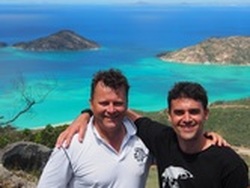
14 September 2014
Drs Peter Macreadie and Paul York - the 2014 Isobel Bennett Marine Biology Fellows - will be on the blower from Lizard Island, FNQ to talk about their studies into QLD’s vast deepwater seagrass habitats. Yes you read correctly – seagrasses. Not corals, seagrasses. And what this has to do with Blue Carbon. And what Blue Carbon is.
Listen here: http://rrrfm.libsyn.com/radio-marinara-14-september-2014
Drs Peter Macreadie and Paul York - the 2014 Isobel Bennett Marine Biology Fellows - will be on the blower from Lizard Island, FNQ to talk about their studies into QLD’s vast deepwater seagrass habitats. Yes you read correctly – seagrasses. Not corals, seagrasses. And what this has to do with Blue Carbon. And what Blue Carbon is.
Listen here: http://rrrfm.libsyn.com/radio-marinara-14-september-2014
#ScaredScientistsIn his black-and-white photography series "Scared Scientists," Nick Bowers captures a raw element not often associated with scientific knowledge. For the series, Bowers interviewed a selection of scientists in varying fields, capturing the frightened looks on their faces while they contemplated their findings. The photos are minimalist but intense, each wrinkle and crease pointing to a human unease we can all connect with.
Bowers told The Huffington Post he hopes to convey "the humanity and vulnerability of the scientists" through his work. "That they are as individuals concerned by climate change, separate from the scientific realm." The artist also had his daughter in mind while creating the series, hoping to use his artwork to create hope for a brighter future. "I constantly hear the word 'wealth' and the importance of passing this on. I'm inspired to pass on a better, more sustainable future," he explained. On his website, Bowers combines a striking portrait with the specific field, educational background, and future predictions of each scientist. Although their powerful words provide an interesting context for their expressions, we think the faces alone say more than enough. Read more in the HuffingtonPost |
|
|
Trophic cascades blue carbon working group
Last week a small team of researchers converged at Deakin Burwood for a CIE funded workshop on 'The influence of trophic cascades on "blue carbon" landscapes'.
Project goals: 1) Provide a review on the occurrence of trophic cascades in coastal vegetated habitats 2) Develop general theoretical predictions for how trophic cascades could influence “blue carbon” in coastal vegetated habitats 3) Identify important research avenues on the effects of trophic cascades on blue carbon Participants: In person - Euan Ritchie, Trisha Atwood, Peter Macreadie, Cath Lovelock, and Jim Fourqurean. Remote - Rod Connolly, Graeme Hays, Jim Estes, and Mike Heithaus. |
Welcome Paul Carnell to the lab
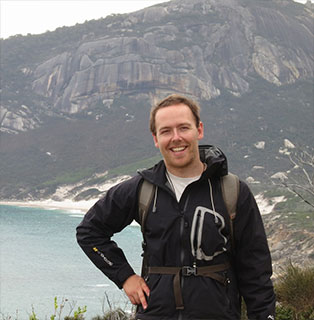
A warm welcome to Paul Carnell who is joining the lab part-time as a project officer on the Victorian Blue Carbon Sampling Program. Paul completed his bachelor of science at the University of Melbourne in 2006 majoring in Zoology and Marine Biology. He then worked at CEE consultants as a marine scientist, primarily carrying our intertidal and subtidal algal surveys around Victoria. After spending way too much time around sewage outfalls, Paul started his honours year in the Keough lab in mid 2007. His research focused on post-settlement mortality of marine sessile invertebrates and how this is influenced by habitat. During his undergraduate and honours year, Paul also worked at the Melbourne Aquarium in customer service and then as a Interpretation/Education officer. Near the end of 2008 Paul started working as a Research Assistant in the Keough lab, carrying our field and lab work for two ARC funded projects. In 2010 Paul started a PhD investigating the factors that influence the resistance and resilience of kelp bed and urchin barren reefs in Port Phillip Bay - he has just handed in his PhD thesis. Paul is also working on a number of projects contracted by Parks Victoria, analysing their large Marine Park dataset, of both sub-tidal and intertidal ecosystems.
Seminar 5 August 2014: Carbon sequestration by coastal vegetated habitats: is blue the new green?I'll be giving a public seminar (minus the tuxedo) on 'blue carbon' at Melbourne University on Tuesday 5th August. Everyone is welcome to attend.
Time and location: 12-1 pm in the Agar Theatre, Zoology Department Abstract: A few years ago the marine science world gave birth to a new term: ‘blue carbon’, which was created to describe the enormous and newly-recognised potential of the oceans to sequester carbon and help slow climate change. Early estimates of the power of blue carbon were staggering - they indicated that blue carbon habitats ranked among the most efficient and permanent sinks on the planet, far exceeding that of key terrestrial carbon sinks (e.g. rainforests). With recognition of the power of blue carbon sinks came concern that if disturbed they could leak vast amounts of stored carbon back into the atmosphere, thereby shifting them from being carbon sinks into carbon sources. This presentation will report on three years of research into blue carbon; spanning microbial processes, impacts of human and climate disturbances on blue carbon stocks, and opportunities to improve the management of blue carbon ecosystems to sequester more carbon. |
Seagrass is awesome!It's here!
The 'Seagrass is Awesome' Book by Year 6, Paynesville Primary School, Victoria has finally arrived. Get your copy through iTunes here. And don't miss the bonus story: 'Seagrass Superdude'. These books are all about the importance of seagrasses to our marine environment. Enviro-Stories is an innovative literacy education program that inspires learning about natural resources and catchment management issues. |
Are rebounding green sea turtles in Bermuda causing collapse of seagrass meadows?
Looking forward to hosting Prof. Jim Fourqurean next week for next week's workshop on 'The influence of trophic cascades on "blue carbon" landscapes'. Jim will be giving a talk on 1 August @ 3pm seminar on 'Are rebounding green sea turtles in Bermuda causing collapse of seagrass meadows?'
Jim Fourqurean is a marine and estuarine ecologist with a special interest in benthic plant communities, food webs, and nutrient biogeochemistry. He has published over 100 papers in the refereed scientific literature, spanning many ecosystems, from planktonic systems to mangrove forests. In particular, he has specialized in the application of elemental and stable isotopic composition of organisms as indicators of ecosystem processes. He is an expert in carbon storage and fluxes in coastal ecosystems, and the importance of these ecosystems to climate regulation and mitigation. In this role, he serves on both the Science and Policy Working Groups of the International Blue Carbon Initiative. He is also an expert on the impacts of energy exploration and oils spills on tropical coastal ecosystems. While working on the Water Quality Protection Program for the Florida Keys National Marine Sanctuary, has made contributions to the science and application of monitoring in Marine Protected Areas. For the past decade, his main research areas have been in Florida Bay and the back-reef environments of the Florida Keys, but he has also worked around the Gulf of Mexico, in Mexico, Panama and Bermuda, the western Mediterranean and Australia. He is currently a professor in the Department of Biological Sciences, Director of the Marine Research and Education Initiative, and a member of the Southeast Environmental Research Center at Florida International University in Miami, Florida. |
How much blue carbon exists in Victoria?
This week we kicked off a major sampling campaign that will determine how much blue carbon exists across the Victorian coast.
Soil samples will be taken from 100's of sites along a 2,000 km stretch of coastline. Saltmarsh, mangrove and seagrass habitats will be the focus of the sampling effort. The program is supported by Corangamite CMA, East Gippsland CMA, Glenelg Hopkins CMA, East Gippsland CMA, and Port Phillip & Westernport CMA, and a collaboration with Dr Jon Sanderman (CSIRO). A full report is expected by November 2014. This first expedition involved new lab member Paul Carnell. If you'd like to join any of the field expeditions please send me an email to [email protected]. But note, you will get muddy! |
|
|
|
PhD student Alex Thomson highly-commended presentation at AMSA14
Congratulations to Alex Thomson who presented her research at the Australian Marine Science Association(AMSA) conference in Canberra this week and received the Ron Kenny Premier Conference Award Highly Commended Oral Presentation. Her presentation was titled 'Fiddler crabs: the hunter-gatherers of blue carbon'. Well done Alex!
|
2015 Honours projects
|
Top gun: aerial drones for mapping wetland vegetation
Unmanned aerial vehicles – commonly referred to as ‘drones’ – are revolutionising conservation projects around the world. Compared with traditional remote sensing technologies, such as satellite and airborne sensors, drones are significantly cheaper and much more accessible. In coastal environments, however, the performance and approaches for using drones to map vegetated habitat has not yet been validated. This project will for the first time investigate the use of drones (VUAS-X5) for mapping seagrass, saltmarsh, and mangrove habitat. The study site for this work will be the north-east corner of Western Port Bay, which is currently facing significant losses of coastal vegetated habitat (>0.5 m of shoreline per year) due to erosional forces. This project will produce geo-referenced and ground-truthed land use/cover maps for the region, which will help guide conservation and restoration efforts as part of a broader ‘green infrastructure’ program. The successful student will ideally be experienced in using GIS and needs to be comfortable working in the field (drivers licence required). The student will work as part of a team involving two PhD students, a research assistant, and members of the Western Port Seagrass Partnership. Good interpersonal skills are essential; the successful student will need to liaise with local farmers. |
Carbon sequestration by lakes: A fresh(water) approach to tackling climate change
Biosequestration is regarded as one of the single largest opportunities for CO2 emission reduction in Australia. The focus has so far been on terrestrial ecosystems (e.g. existing carbon farming initiative), yet recent data indicates that freshwater ecosystems have much higher (~50-times) carbon burial efficiencies than powerful terrestrial carbon sequestering ecosystems such as rainforests. However, the carbon sink capacity of Australian freshwater ecosystems is largely unknown. This study aims to fill this knowledge gap by measuring carbon stocks and carbon accumulation rates of freshwater lakes throughout Victoria. The project will involve a ‘road trip’ involving the collection of sediment cores (getting muddy!), followed by organic carbon content determination and radiometric dating. The successful student must be comfortable working in the field (drivers licence required), and experience in ecology, chemistry, and/or geology. Good interpersonal skills are critical – the successful individual will need to work as part of a team, and will be required to liaise with private land-holders. More information:
| ||||||
Biosequestration on the Corangamite agendaInvestigating the impact of a changing climate on natural resource management (NRM) was the theme for an inaugural Corangamite CMA knowledge sharing conference.
Corangamite CMA Strategy Co-ordinator Chris Pitfield talked about the work involved in his NRM Planning for Climate Change Project, which seeks to identify climate change impacts on the region’s natural assets, including native vegetation, waterways, wetlands, coasts and soil. A presentation from Geoff Park, director of Natural Decisions Pty Ltd and Stephen Farrell, manager GIS and Cartography of Spatial Vision, included spatial representations on climate change impact scenarios for 50 and 90 years. Priority landscapes for carbon sequestration to help develop strategies to build landscape integrity and guide adaptation and mitigation actions to address climate change impacts on natural ecosystems were also identified. Peter Macreadie spoke of the the potential of blue carbon as a way of mitigating the impact of climate change within the Corangamite region. |
York and Macreadie win Isobel Bennett Marine Biology FellowshipDr Paul York (James Cook University) and Dr Peter Macreadie (UTS / Deakin) have won the 2014 Isobel Bennett Marine Biology Fellowship for research at the Lizard Island Research Station.
The Fellowship is named in recognition of the late Dr Isobel Bennett who was one of Australia's eminent marine biologists. The Hermon Slade Raiatea Foundation has provided funding to the Lizard Island Reef Research Foundation (LIRRF) to enable this fellowship. York and Macreadie will be studying the carbon sequestration capacity of deep water seagrasses. Queensland's deep-water seagrasses are among the most extensive on earth (>40,000 km2), but it is not known whether they play a major role in global carbon sequestration like their shallower-water counterparts. York and Macreadie will be combining forces during this trip with Dr Michael Rasheed's team who will using helicopters to gather samples from remote locations throughout the Great Barrier Reef. |
|
New paper on seagrass dispersal just accepted in Estuaries and Coasts - Congratulations Alex!
PhD student, Alex Thomson, has just had her Honours work accepted for publication.
Thomson ACG, York PH, Smith TM, Sherman CDH, Booth DJ, Keough MJ, Ross DJ, and Macreadie PI. (accepted 14-6-14) Seagrass viviparous propagules as a potential long-distance dispersal mechanism.Estuaries and Coasts in press. |
Marine Pollution Bulletin Special Issue on Seagrasses
After two long years, the MPB Special Issue is finally here! Check out our article on 'Quantifying and modelling the carbon sequestration capacity of seagrass meadows - A critical assessment'
Highlights
|
|
|
Factors affecting blue carbon remineralisation rates
After four long months, our laboratory remineralisation experiment has finally come to a close.
Thanks to Stacey, Kasper, Simon and Trish for working some crazy hours over the weekend to get the final microsensor profiles and extrude the sediment cores. Now our samples are off to Hawaii for geochemical analyses! |
Peter Macreadie discusses blue carbon sequestration on 2SER tonight
Tune into 2SER's 'A Question of Balance' tonight (107.3 FM, 7:30pm) to hear Peter Macreadie talking about sequestration of blue carbon by coastal vegetated habitats.
Here is the the link: Blue gums for blue carbon
Here is the the link: Blue gums for blue carbon
New Honours projects
I currently have on offer the following Honours projects:
|
Rigs to reefs: a homely solutionBy Terry Clinton
In summary:
|
Understanding the behaviour of undersea creatures is only part of the job of marine scientists, at least for those looking for the best environmental outcome from the decommissioning of Australia's ageing offshore oil and gas rigs.
Just as they make homes in shipwrecks, marine organisms attach themselves to the underwater portions of oil production platforms, transforming them into artificial reefs.
Researchers at the University of Technology, Sydney (UTS) are investigating the viability of these reef-like ecosystems and whether submerged parts of the structures should be left in place to preserve artificial reefs.
Dr Ashley Fowler and his colleagues in the Decommissioning Ecology Group at UTS are assessing what life forms are attaching themselves to – and living around – Australian rigs. But they are also finding that to get the best result at sea, they need to know something about the life inhabiting boardrooms and offices.
The concept of "rigs to reefs" is well established in the Gulf of Mexico in the US where, since the 1980s, more than 200 decommissioned structures have been left in place or moved to provide habitats for sea life.
The UTS scientists see the potential for similar initiatives in Australia. "During research in 2008, we observed 31 species of fish associated with small structures on the continental shelf of north-west Australia," says Dr Fowler.
"One of the commercial species of snapper was found in high abundance. The structures also supported numerous invertebrate species including crabs, coral shrimp, soft corals and barnacles," he says.
Transforming rigs to reefs appears to be a win-win for industry and the environment, with resource companies potentially saving millions on the costs of removing decommissioned platforms. In practice, it is a lot more complicated.
In the Gulf of Mexico there has been strong support for rigs to reefs from recreational fishers and divers, says Dr Fowler. But each region is different and conflict can arise among groups such as environmentalists and the fishing industry.
With one oil production facility in the Timor Sea decommissioned last year and more than 60 big structures around Australia reaching the end of their useful lives, the UTS team is designing a process to involve all stakeholders and identify the best options.
"Rigs to reefs may have benefits but it is just one of many potential decommissioning options that must be considered," says Dr Fowler.
"Our opinion is that no decommissioning – rigs to reefs or otherwise – should occur in this country until sufficient research has been conducted to assess the environmental impacts."
He says the team's approach compares multiple options against a range of criteria, including the environment, and identifies the one that performs best across the board.
"To that we bring the results of environmental studies to assess the marine organisms associated with oil structures in Australia and the actual value of the habitat that could be lost," he says.
"[Rig] companies need independent scientists to be at the helm of these processes and everything needs to be on the table at the outset.
"We are also keen for regulatory bodies, not just companies, to use this tool to make sound environmental decisions."
The group is working with several oil and gas companies to test how the model might help in future complex decommissioning programs and is looking to work with other industry partners to test and refine the approach.
Just as they make homes in shipwrecks, marine organisms attach themselves to the underwater portions of oil production platforms, transforming them into artificial reefs.
Researchers at the University of Technology, Sydney (UTS) are investigating the viability of these reef-like ecosystems and whether submerged parts of the structures should be left in place to preserve artificial reefs.
Dr Ashley Fowler and his colleagues in the Decommissioning Ecology Group at UTS are assessing what life forms are attaching themselves to – and living around – Australian rigs. But they are also finding that to get the best result at sea, they need to know something about the life inhabiting boardrooms and offices.
The concept of "rigs to reefs" is well established in the Gulf of Mexico in the US where, since the 1980s, more than 200 decommissioned structures have been left in place or moved to provide habitats for sea life.
The UTS scientists see the potential for similar initiatives in Australia. "During research in 2008, we observed 31 species of fish associated with small structures on the continental shelf of north-west Australia," says Dr Fowler.
"One of the commercial species of snapper was found in high abundance. The structures also supported numerous invertebrate species including crabs, coral shrimp, soft corals and barnacles," he says.
Transforming rigs to reefs appears to be a win-win for industry and the environment, with resource companies potentially saving millions on the costs of removing decommissioned platforms. In practice, it is a lot more complicated.
In the Gulf of Mexico there has been strong support for rigs to reefs from recreational fishers and divers, says Dr Fowler. But each region is different and conflict can arise among groups such as environmentalists and the fishing industry.
With one oil production facility in the Timor Sea decommissioned last year and more than 60 big structures around Australia reaching the end of their useful lives, the UTS team is designing a process to involve all stakeholders and identify the best options.
"Rigs to reefs may have benefits but it is just one of many potential decommissioning options that must be considered," says Dr Fowler.
"Our opinion is that no decommissioning – rigs to reefs or otherwise – should occur in this country until sufficient research has been conducted to assess the environmental impacts."
He says the team's approach compares multiple options against a range of criteria, including the environment, and identifies the one that performs best across the board.
"To that we bring the results of environmental studies to assess the marine organisms associated with oil structures in Australia and the actual value of the habitat that could be lost," he says.
"[Rig] companies need independent scientists to be at the helm of these processes and everything needs to be on the table at the outset.
"We are also keen for regulatory bodies, not just companies, to use this tool to make sound environmental decisions."
The group is working with several oil and gas companies to test how the model might help in future complex decommissioning programs and is looking to work with other industry partners to test and refine the approach.
DSE Seagrass resilience writing retreat - Phillip Island
After three years of data collection, the DSE seagrass resilience team has come together to put it all together at a paper writing retreat in Phillip Island. Participants included Prof. Mick Keough (Uni of Melbourne), Dr Tim Smith (Deakin), Dr Paul York (JCU), Dr Craig Sherman (Deakin), Dr Jeff Ross (UTAS), and Dr Peter Macreadie (UTS/Deakin). In addition to writing papers, the team took some time to collect seagrass samples around Western Port.
|
|
|
Remineralisation rates in saltmarsh, seagrass and mangroveThis week we kicked off a major project of the effects of environmental changes on remineralisation rates of blue carbon in mangrove, saltmarsh, and seagrass sediments. We had an epic week in the field, collecting >500 cores. The cores are now in the labs at UTS undergoing incubation. Cores will be pulled out of tanks for various analyses during the next 4 months. Participants include: Dr Trisha Attwood, Prof. Rod Connolly, Prof. Cath Lovelock, Prof. Peter Ralph, Simon Hardy, Dr Daniel Nielsen, Dr Maria Schmitz Fontes, Dr Justin Seymour, Dr Katherina Petrou and Dr Peter Macreadie (and possibly some others that i have forgotten to mention!).
|
Impacts of bioturbators on the carbon sequestration capacity of seagrass meadowsPhD student Alex Thomson commences laboratory experiments this week to better understand the impacts of bioturbators on seagrass blue carbon. Her bioturbator subjects are Callianassid 'ghost shrimp', which are thought to have negative impacts on the carbon sequestration capacity of seagrass meadows.
|
|
|
|
Restoring carbon stocks with artificial seagrassPhD student Pemika Apichanangkool returns from Thailand where she has deployed artificial seagrass within the Haad Chao Mai National Park to investigate the feasibility of using artificial seagrass to assist recovery of below-ground carbon stocks following degradation of natural seagrass. Pemika's research has previously shown that much of the seagrass 'blue carbon' stock derives from terrestrial sources - as opposed to carbon production due to photosynthesis by the seagrass plants themselves - and therefore she proposes that artificial seagrass may produce similar results to natural seagrass with respect to recovering carbon stocks. The artificial seagrass also 'comes to life' as it becomes colonised by epiphytes, which subsequently attract invebrates and fish.
|
ANSTO supports blue carbon research
Through it's AINSE Research Award scheme, ANSTO has generously supported two projects (ALNGRA14031 and ALNGRA14004) that seek to understand the stability of ancient 'blue carbon' within seagrass meadows.
The project involves iTRAX, age dating (210Pb and 14C), microbial analyses, stable isotope analyses, and other geochemical proxies. Investigators include: Macreadie, Skilbeck, Trevathan-Tackett, Jacobsen, Zawadzki, Heijnis, Gadd, Levchenko, Connolly, and Thomson. |
|
Your browser does not support viewing this document. Click here to download the document.
|
Just accepted: Resilience of Zostera muelleri seagrass to small-scale disturbances: the relative importance of asexual vs. sexual recovery. Ecology and EvolutionAuthors: Macreadie PI, York PH, Sherman CDH.
There is urgent need to understand the mechanisms that underpin seagrass seagrass resilience – the ability to recover from disturbance without shifting to an alternative stable state. In this study, we used manipulative disturbance-recovery experiments in the field to investigate factors that mediate seagrass resilience. The experiment, which lasted 65-weeks, was performed at 4 sites within Lake Macquarie (Australia’s largest coastal lake), and involved Zostera muelleri, which is regarded as a threatened and globally significant congeneric species. We found that resilience of Z. muelleri varied significantly with disturbance intensity and mode of recovery. Specifically, recovery from low intensity disturbances (i.e. where only the above-ground plant material is removed - typical of herbivore grazing) occurred within a couple of weeks, whereas recovery from high intensity disturbances took up to 18-times longer. Furthermore, we found no recovery in situations that depended on sexual regeneration (i.e. seeds), yet analyses of genotypic diversity suggested the capacity for sexual regeneration at fine scales, as indicated by the relatively high number of genotypes within plots. We discuss environmental factors that appear to influence recovery rates. Overall, this study shows that asexual regeneration via rhizome extention (as opposed to sexual regeneration via seeds) is the rapid and consistent mode of recovery of Z. muelleri in response to small-scale disturbances. These findings have important implications for efforts to facilitate recovery of seagrasses in denuded areas. |
Thank you for visiting!Thanks for visiting this site. I hope you found something useful here. It's been a steep learning curve for me setting up a website, but it's been fun putting all the photos and videos to good use. I will try to keep up with doing regular updates as the science develops. If you have any suggestions for improvement please let me know.
|
|
|
Research meeting in Moreton Bay to discuss 'blue carbon' projects within Australia
Understanding the important role of Australia’s coastal and marine wetlands in storing atmospheric carbon dioxide was the focus of the 2-day meeting. The meeting drew together scientists from institutions around Australia, including: the University of Technology, Sydney, University of Western Australia, University of Queensland, Griffith University, University of New South Wales, Australian Institute of Marine Science, Southern Cross University and Edith Cowan University.
Unfortunately, due to government media embargoes I cannot tell you what actually happened, or photos/video of who was there, but I can show you these pretty pictures of the scenery around Moreton bay. |
CERF2013
Just returned from the 22nd Biennial Conference of the Coastal and Estuarine Research Federation (CERF): Toward Resilient Coasts and Estuaries, Science for Sustainable Solutions
Keynote addresses were delivered by iconic Hollywood Producer, Jerry Zucker, and Acting Under Secretary of Commerce for Oceans and Atmosphere and Acting NOAA Administrator, Dr. Kathryn Sullivan. It was a pleasure to be a speaker in the 'Coastal and Estuarine Carbon Cycling' theme, convened by Matt Kirwin, Thomas Mozdzer, James Fourqurean, and Catherine Lovelock. Quote of the conference by Dr Paul Montagna (winner of the William A. Niering Award for Outstanding Educator): "It's amazing what you can accomplish in science if you don't care who gets credit" |
Just accepted: Molecular indicators of chronic seagrass stress: a new era in the management of seagrass ecosystems? Ecological Indicators
We argue that molecular indicators for early detection of chronic stress in seagrasses will significantly improve the effectiveness of seagrass management and conservation efforts. Given recent progress towards developing molecular indicators of seagrass stress, we can expect that within the next couple of years we will see the first demonstration of molecular indicators of seagrass stress.
Authors: Macreadie PI, Schliep MT, Rasheed MA, Chartrand K, & Ralph PJ. |
Just accepted by the Ocean & Coastal Management: A multi-decision approach to decommissioning of offshore oil and gas infrastructureThousands of the world’s offshore oil and gas structures are approaching obsolescence and will require decommissioning within the next decade. Many nations have blanket regulations requiring obsolete structures to be removed, yet this option is unlikely to yield optimal environmental, societal and economic outcomes in all situations. We propose that nations adopt a flexible approach that allows decommissioning options to be selected from the full range of alternatives (including ‘rigs-to-reefs’ options) on a case-by-case basis. We outline a method of multi-criteria decision analysis (Multi-criteria Approval, MA) for evaluating and comparing alternative decommissioning options across key selection criteria, including environmental, financial, socioeconomic, and health and safety considerations. The MA approach structures the decision problem, forces explicit consideration of trade-offs and directly involves stakeholder groups in the decision process. We identify major decommissioning options and provide a generic list of selection criteria required for inclusion in the MA decision process. To deal with knowledge gaps concerning environmental impacts of decommissioning, we suggest that expert opinion feed into the MA approach until sufficient data become available. We conducted a limited trial of the MA decision approach to demonstrate its application to a complex and controversial decommissioning scenario; Platform Grace in southern California. The approach indicated, for this example, that the option ‘leave in place intact’ would likely provide best environmental outcomes in the event of future decommissioning. In summary, the MA approach will allow the environmental, social, and economic impacts of decommissioning decisions to be assessed simultaneously in a transparent manner.
In a nutshell:
Authors: Fowler AM, Macreadie PI, Jones DOB, Booth DJ |
Just accepted by the Journal of Molluscan Studies: Effects of Pinna clams on benthic macrofauna and the possible implications of their removal from seagrass ecosystems
Pinna clams – also known as ‘razor clams’, ‘razor fish’, ‘razor shells’, and ‘pen shells’ (Fig. 1a) – are habitat-forming bivalves that occur within seagrass meadows in many of the world’s oceans. In Lake Macquarie (New South Wales), Australia’s largest coastal lake, local residents and recreational users of the Lake have called for eradication of Pinna clams from seagrass meadows due to the hazard they pose to swimmers. Their broad posterior margins are razor-sharp - hence the name ‘razor’ - and throughout the summer a considerable number of swimmers require hospitalisation after standing on the clams. Although Pinna clams have always resided within the Lake, there have been anecdotal reports of a ‘population boom’. The Lake Macquarie City Council is therefore considering a Pinna clam removal program, which would see the clams physically removed from popular swimming areas.
The goal of this study was to assess the potential importance of Pinna sp. in Lake Macquarie for the seagrass community - namely benthic macrofauna - and/or the seagrass itself. Our primary interest was whether removal of Pinna sp. is likely to negatively impact the seagrass ecosystem within which they live – i.e. would eradication of Pinna sp. from seagrass meadows within the Lake have a major impact on the seagrass community? To address this question, we performed a series of surveys and manipulative experiments; the details of which can be found in the Supplementary Section. In brief, these involved: (1) a survey of site-to-site variability in Pinna sp. clam densities and sizes; (2) a survey of organic matter content and infaunal macroinvertebrates associated with natural Pinna sp. populations compared with seagrass and bare sand; and (3) a manipulative experiment to parse out the relative importance of Pinna sp. clams versus seagrass in providing habitat for benthic macrofauna. In the context of our results, as well as other published work, we then consider the implications of Pinna sp. removals on the future viability of the Pinna sp. populations within the Lake, keeping in mind that Pinna sp. clams are long-lived (up to 18 years) and make relatively limited investment towards reproduction. Authors: Peter I. Macreadie, David L. Kimbro, Valentin Fourgerit, Jason Leto, A. Randall Hughes |
New paper provides the first assessment of the value of Australian oil and gas rigs as fish habitat
Congratulations to Nico Pradella (the 'Italian Stallion') and the team (particularly Ash Fowler) on the acceptance of another paper: 'Fish assemblages associated with oil industry structures on the continental shelf of Northern Australia' in the Journal of Fish BIology.
Thank you also to our oil industry partners for making their ROV footage available to us for this research. Authors: Pradella N, Fowler AM, Booth DJ, and Macreadie PI |
|
Decommissioning Ecology Group
The Decommissioning Ecology Group has launched their new website:www.rigtoreef.com
Photo: Peter Macreadie, David Booth, and Ash Fowler |
ABC Radio National's Off Track program covers seagrass research by JCU and UTS
By Joel Werner
Saturday 5 October 2013 1:30PM Front lawn to the ocean, seagrass has long been known to play an essential role in the marine ecosystem. It acts as a nursery for fish species, food for turtles and dugongs, and is a natural mesh that holds the coastline together, preventing erosion. But recently, scientists have begun to understand the plant's unique capacity to sequester carbon; seagrass meadows capture and store carbon at a rate forty times faster than a tropical rainforest - and they can store that carbon for thousands of years. This week, Off Track heads to Green Island, 27km offshore from Cairns in Far North Queensland, to visit a research laboratory that's 18m under the sea. Listen to the program @http://www.abc.net.au/radionational/programs/offtrack/seagrass/4999016 |
|
|
|
What's it all about? SeagrassThe extended video of week 1 of seagrass research at Gladstone
|
Video - Queen of the seagrassA short video of Cath Bryant (from JCU) in action. Notice how she continues to smile even when she's crawling through the mud. Ah, the life of a seagrass biologist!
|
Video - Seagrass research at GladstoneFirst week of Gladstone fieldwork almost done; only 10 weeks left to go! Here's a short video of the first few days of fieldwork, starring: Capt. Paul Leeson, Paul York, Cath Bryant, Aurora Ricart, and Pete Macreadie.
|
Just accepted in PLOS ONE: Physiological and morphological responses of the temperate seagrass Zostera muelleri to multiple stressors - investigating the interactive effects of light and temperature
Authors: Paul H. York, Renee K. Gruber, Ross Hill, Peter J. Ralph, David J. Booth, Peter I. Macreadie
While there has been a good deal of research into understanding how individual stressors affect seagrass populations, we know relatively little about how multiple environmental stressors interact to affect seagrass health, even though seagrasses are typically faced with more than one stressor during disturbance events. In this study, we studied how Zostera muelleri (a globally significant and threatened congeneric species) responds to two common environmental stressors - temperature and light – over a 3-month period in laboratory mesocosms (one of the longest running laboratory-based studies on Zosteraphysiology). During the study, we intensively monitored a number of proxies of seagrass health, including; photosynthetic yield (>11,000 PAM measurements), growth and survival, photosynthetic pigments, photosystem II photochemistry, and chlorophyll fluorescence. We identified the temperature for optimal growth (27°C), and found that sustained summer maximum temperatures (where the seagrasses were collected; 32°C) are enough to cause rapid seagrass mortality, suggesting that the seagrass populations under investigation are living close to their thermal tolerance. Seagrasses were found to be relatively resilient (survivorship was maintained) to low light levels (up to 75% shading of ambient conditions); however, there were costs, including: reduced growth, upregulation of photochemical efficiency (photosystem II), and suppression of photosynthetic yield. Surprisingly, we did not detect interactive effects of light and temperature on seagrass health, despite these two stressors having significant effects on seagrass health in isolation. |
|
|
|
Razor clams as bioindicators of heavy metal pollutionThis week the razor clam bioindicator team (Kevin McCauley, Jess Reeves, David Bishop, Ben Kefford, Aziz Rahman, Ross Jeffries, Patricia Gadd, Henk Heijnis, David Booth, Peter Macreadie) are running another batch of razor clam (Pinna bicolor) shells on LA-ICP-MS (@ UTS) and iTRAX (@ ANSTO). The goal of the project is to see whether the clams can be used to assess historical pollution within Lake Macquarie.
|
Welcome Aurora!
Aurora M Ricart, a PhD student from University of Barcelona, is visiting us at UTS:C3 for the next four months. Her thesis research focusses on landscape and community ecology to study habitat fragmentation in seagrasses and its consequences on nutrient dynamics and species diversity.
During her stage in our research group she is going to run experiments on the edge effects on carbon stocks on seagrass meadows. When a habitat is in regression, as most of the seagrasses over the world, one of the main consequences is the loss of habitat structure. Seagrass meadows become in small patches, and more edge of the habitat is exposed to adjacent habitats and subjected to new interactions. Understanding habitat edge dynamics is essential to follow the new functionality of the habitat, particularly on the carbon stored by seagrass meadows in terms of the irreversible climate change. This work will be develop in Gladstone Harbour, Queensland, as a part of a project in collaboration with James Cook University. |
Blue is the new green
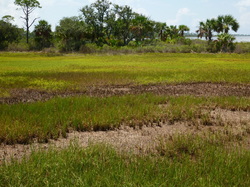
When I was a kid, back when the hole in the ozone layer was the big topic of environmental discussion, I was obsessed with saving the rain forests. I’d heard (probably watching Fern Gully) that these majestic places, full of life and wonder, were the antidote to all the bad stuff we’d done to our planet: they sucked up our carbon dioxide and spit out clean oxygen at a rate faster than–I thought–any other type of habitat on the planet.
But yesterday, reading a research article from marine and environmental sciences professors David Kimbro andRandall Hughes, I learned that another habitat is actually 55 times better at sucking up carbon dioxide than my beloved rain forests. Salt marshes, while occupying only 0.1 to two percent of the global land area as tropical rain forests, trap substantially more CO2 and store it for millennia, rather than just decades. All this time I’d been trying to “go green,” when perhaps thinking blue could be even more important.
In the last few years, Kimbro told me, “blue carbon” has become a hot item for inquiry. Researchers have begun examining salt marshes and sea grass beds, which cover hectares of the ocean floor, as so-called “carbon sinks.” Below them, thousands of years worth of carbon has been buried in the sediment. Above ground, the plants are busy capturing gaseous carbon through photosynthesis and filtering out particulate carbon in the sediment bed. On the one hand we could be thinking of ways to leveraged these blue carbon sinks for environmental clean up and remediation efforts. On the other, we could be contributing even more to the greenhouse gas problem when we disrupt these habitats, potentially releasing stored carbon as CO2.
A lot of work lately has focused on that second bit, looking at vast areas of marshland and how their disruption through human forces may impact the environment. “Big scale is the focus,” said Kimbro. “We wanted to show that it’s important on the small scale also.” They wanted to look at how local, natural disturbances play into a salt marsh’s capabilities as a carbon sink, an important variable when figuring out how much value the habitat provides to humans, and thus how much we should weigh it when calculating the cost of land use development projects.
Kimbro and Hughes, along with Peter Macreadie, a colleague from the University of Technology in Sydney, Australia, investigated the impact of small disturbances on a salt marsh’s ability to sequester carbon. Specifically, they looked at something called “wrack accumulation,” which happens when sea grass gets uprooted from its own habitat and swept on top of a salt marsh by the sea. If it sits there long enough, it can cause the marsh grass to die off, which, the researchers hypothesized, could cause big changes in the carbon profile of the soil below.
What those changes might look like was another question all of its own. Perhaps the carbon trapped in the sea grass would get buried under the dead salt marsh, increasing the carbon concentration in these areas. Or perhaps the salt marsh destruction would release previously sequestered carbon and get into the environment, either as particulate matter or as CO2.
They found the latter to be the case, at least in the particular location they studied — a soccer field sized area of salt marsh off the coast of Florida. The team examined nearly 300 patches of salt marsh that had been disturbed by sea grass for at least three months prior to the study, as well as a matching, undisturbed plot nearby for each. They took a 15 cm soil core from each bed and tested the amount of carbon in it, both that trapped in the soil sediment and that in the plant biomass. They found a staggering 30% decrease in carbon content in the disturbed plots versus the undisturbed areas. In the first centimeter of the core, the carbon was mostly lost from plant biomass, whereas below that it was lost from the sediment carbon.
Now Kimbro wants to do similar studies in other areas, such as salt marshes in the northeast, which are also susceptible to rack accumulation. “That’s how you get a better handle on the story,” said Kimbro. “If I then go and study it in more places, and each place differs in some little bit, and by seeing how the story changes across all those sites you really get to know the system better.” For example, he may find that sea grass actually does contribute to the carbon content in some areas but not others.
The research was recently released in the open-access journal PLOS ONE and they hope it will spark more investigations in this area by other labs. For one thing, they’d like to figure out where exactly the carbon goes once it’s been released by the disturbance. It could be getting released as CO2, which would not be good, but it could also be getting released as particulate that eventually gets buried elsewhere in the sea. The area of research is becoming increasingly important Kimbro said, because these kinds of local disturbances will only increase with increasing sea level, allowing the disturbance to reach more areas. If we’re to really do anything with or about these carbon sinks, Kimbro said, we need to understand how they behave. That’s what he and his colleagues intend to do.
- See more at: http://www.northeastern.edu/insolution/sustainability/2013/07/blue-is-the-new-green/#sthash.qkimoHzS.dpuf
But yesterday, reading a research article from marine and environmental sciences professors David Kimbro andRandall Hughes, I learned that another habitat is actually 55 times better at sucking up carbon dioxide than my beloved rain forests. Salt marshes, while occupying only 0.1 to two percent of the global land area as tropical rain forests, trap substantially more CO2 and store it for millennia, rather than just decades. All this time I’d been trying to “go green,” when perhaps thinking blue could be even more important.
In the last few years, Kimbro told me, “blue carbon” has become a hot item for inquiry. Researchers have begun examining salt marshes and sea grass beds, which cover hectares of the ocean floor, as so-called “carbon sinks.” Below them, thousands of years worth of carbon has been buried in the sediment. Above ground, the plants are busy capturing gaseous carbon through photosynthesis and filtering out particulate carbon in the sediment bed. On the one hand we could be thinking of ways to leveraged these blue carbon sinks for environmental clean up and remediation efforts. On the other, we could be contributing even more to the greenhouse gas problem when we disrupt these habitats, potentially releasing stored carbon as CO2.
A lot of work lately has focused on that second bit, looking at vast areas of marshland and how their disruption through human forces may impact the environment. “Big scale is the focus,” said Kimbro. “We wanted to show that it’s important on the small scale also.” They wanted to look at how local, natural disturbances play into a salt marsh’s capabilities as a carbon sink, an important variable when figuring out how much value the habitat provides to humans, and thus how much we should weigh it when calculating the cost of land use development projects.
Kimbro and Hughes, along with Peter Macreadie, a colleague from the University of Technology in Sydney, Australia, investigated the impact of small disturbances on a salt marsh’s ability to sequester carbon. Specifically, they looked at something called “wrack accumulation,” which happens when sea grass gets uprooted from its own habitat and swept on top of a salt marsh by the sea. If it sits there long enough, it can cause the marsh grass to die off, which, the researchers hypothesized, could cause big changes in the carbon profile of the soil below.
What those changes might look like was another question all of its own. Perhaps the carbon trapped in the sea grass would get buried under the dead salt marsh, increasing the carbon concentration in these areas. Or perhaps the salt marsh destruction would release previously sequestered carbon and get into the environment, either as particulate matter or as CO2.
They found the latter to be the case, at least in the particular location they studied — a soccer field sized area of salt marsh off the coast of Florida. The team examined nearly 300 patches of salt marsh that had been disturbed by sea grass for at least three months prior to the study, as well as a matching, undisturbed plot nearby for each. They took a 15 cm soil core from each bed and tested the amount of carbon in it, both that trapped in the soil sediment and that in the plant biomass. They found a staggering 30% decrease in carbon content in the disturbed plots versus the undisturbed areas. In the first centimeter of the core, the carbon was mostly lost from plant biomass, whereas below that it was lost from the sediment carbon.
Now Kimbro wants to do similar studies in other areas, such as salt marshes in the northeast, which are also susceptible to rack accumulation. “That’s how you get a better handle on the story,” said Kimbro. “If I then go and study it in more places, and each place differs in some little bit, and by seeing how the story changes across all those sites you really get to know the system better.” For example, he may find that sea grass actually does contribute to the carbon content in some areas but not others.
The research was recently released in the open-access journal PLOS ONE and they hope it will spark more investigations in this area by other labs. For one thing, they’d like to figure out where exactly the carbon goes once it’s been released by the disturbance. It could be getting released as CO2, which would not be good, but it could also be getting released as particulate that eventually gets buried elsewhere in the sea. The area of research is becoming increasingly important Kimbro said, because these kinds of local disturbances will only increase with increasing sea level, allowing the disturbance to reach more areas. If we’re to really do anything with or about these carbon sinks, Kimbro said, we need to understand how they behave. That’s what he and his colleagues intend to do.
- See more at: http://www.northeastern.edu/insolution/sustainability/2013/07/blue-is-the-new-green/#sthash.qkimoHzS.dpuf
PhD student Stacey Trevathan-Tackett takes out FRDC Award
Congrats to Stacey Trevathan-Tackett for winning the Fisheries Research Development Corporation Award for Best Poster Presentation On Natural Resources Sustainability or Industry Development at last week's Australian Marine Sciences Association (AMSA) conference on the Gold Coast.
Stacey adressed the issue of microscale sediment chemistry during seagrass decomposition. Seagrass meadows are a globally significant sink for biologically derived sedimentary organic carbon with seagrass detritus playing an important role in coastal carbon biogeochemistry and accumulation. Over three months Stacey studied the decomposition of above- and belowground biomass from the dominant temperate seagrass Zostera muelleri under controlled laboratory conditions. The effects of seagrass leaf and root/rhizome degradation on sediment oxygen and hydrogen sulfide levels were followed using electrochemical microsensors. The aims of this study were to provide insight into the biogeochemical processes involved in seagrass organic carbon remineralisation, as well as to eventually link this data to other factors related to seagrass degradation including seagrass decay rates, changes in seagrass C:N:P and microbial abundance under the different temperature and nutrient treatments. |
|
|
|
New paper: Loss of 'blue carbon' from coastal salt marshes following habitat disturbance
Read the paper in Plos One (Open Access) at http://www.plosone.org/article/info%3Adoi%2F10.1371%2Fjournal.pone.0069244
Increased recognition of the global importance of salt marshes as ‘blue carbon’ (C) sinks has led to concern that salt marshes could release large amounts of stored C into the atmosphere (as CO2) if they continue undergoing disturbance, thereby accelerating climate change. Empirical evidence of C release following salt marsh habitat loss due to disturbance is rare, yet such information is essential for inclusion of salt marshes in greenhouse gas emission reduction and offset schemes (e.g. UN-REDD+). Here we investigated the stability of salt marsh (Spartina alterniflora) sediment C stocks following seagrass (Thallasia testudinum) wrack accumulation; a form of disturbance common in salt marshes throughout the world causing ‘halos’ of bare sand. At our study site (St Joseph Bay, Florida, USA), we recorded 296 halos in a salt marsh meadow the size of a soccer field (7 275 m2). In the halos examined (7.5 ± 2.3 m2; mean ± SE), which were 3-12 months old, we found that the organic C of subsurface sediment zones (1 – 5 cm depth) was ~30% lower than the subsurface sediments of the surrounding undisturbed salt marsh. Further sampling and analysis revealed that halos had lost their below-ground plant (salt marsh) biomass, which otherwise forms the main component of the long-term ‘refractory’ C stock. We conclude that disturbance to salt marsh habitat leads to significant release of below-ground C, likely shifting salt marshes from C sinks to C sources. This mechanism of C release from salt marsh habitats is likely to increase in the future due to sea levels rise; which will increase wrack production due to increasing storminess, and will facilitate delivery of wrack into salt marsh zones due to higher and more frequent inundation. |
Talking seagrass with our PM Julia Gillard and former PM John Howard
On the evening of Thursday June 6 2013, the American Australian Association (AAA) held its 2013 Benefit Dinner at the Sydney Convention Centre to honour Andrew Liveris, President, Chairman and CEO of The Dow Chemical Company and Richard (Dick) Warburton AO LVO, Chairman of Westfield Retail Trust, Magellan Flagship Fund, Citigroup Pty Ltd and Manufacturing Australia.
Over 500 guests attended the dinner including dignitaries, leaders of the Sydney business and philanthropic community and performers who will salute the extraordinary achievements of both Andrew Liveris and Richard (Dick) Warburton AO LVO. The event was hosted by television presenter and financial commentator David Koch and there were be tributes on the night to Andrew Liveris and Richard (Dick) Warburton AO LVO from Prime Minister Julia Gillard and former Prime Minister John Howard OM AC. Entertainment on the evening will be provided by Silvie Paladino and the Qantas Choir, alongside members of the Boston Children's Chorus. World renowned French artist Jean-Pierre Blanchard will attend the event to uniquely document the celebration. And of course, there was an opportunity to talk about how awesome seagrass is! And especially great to have babysitters so my lovely wife could join the fun. More information: http://www.americanaustralian.org.au/ |
Dow supports blue carbon research
Special thanks to Craig Arnold (Dow CEO, Australia) and Andrew Livers (Dow CEO, Global) for providing the opportunity (via the AAA Education Fund) for me to work with leading scientists in the USA on devising ways to maximise carbon storage in blue carbon ecosystems, and minimise carbon leakage. It's been a pleasure to contribute to Dow's 'Vision Zero'.
|
International Blue Carbon Working Group at UTS - 15-17th May 2013
The Blue Carbon Initiative is a global program working to mitigate climate change through the restoration and sustainable use of coastal and marine ecosystems. The Initiative currently focuses on mangroves, tidal marshes and seagrasses. The Blue Carbon Initiative brings together governments, research institutions, non-governmental organizations and communities from around the world. The Initiative is coordinated by Conservation International (CI), the International Union for Conservation of Nature (IUCN), and the Intergovernmental Oceanographic Commission of the United Nations Educational, Scientific, and Cultural Organization (IOC-UNESCO).
More information: http://thebluecarboninitiative.org/category/about/the-initiative/ Photo by Marea Martlew |
Blue carbon sequestration by seagrasses
PADI Foundation supports 'blue carbon' researchCongratulations to Stacey Trevathan-Tackett on being awarded the 2013 PADI FOUNDATION grant to investigate 'Dynamics of sedimentary carbon in seagrass meadows in Australia'.
With the rapid escalation of greenhouse gases, the need to reduce emissions has become paramount. Recently, seagrass meadows have been advocated as primary, natural, long-term carbon sinks. This project focuses on how a dominant Australian seagrass, Zostera muelleri, functions as a carbon sink. |
Scholarships
Check out the 'Prospective students' tab for information on Honours, Masters, and PhD scholarships within C3.
Mid-year intake Honours students are eligible for a $6,000 scholarship. |
The multi billion dollar cost of losing seagrass
|
Link to media HERE
Failure to protect seagrasses may cost $45B
Australia is losing massive amounts of seagrass and the effects of those losses could be counted in billions of dollars, say environmental experts.
See full article at:http://www.abc.net.au/rural/telegraph/content/2013/s3688556.htm Audio link below |
starts at 13:00
|
Nuclear fallout
By FRANCES RAND Feb. 6, 2013, 7:28 a.m.
IN the 1960s 11 holes were blown into one of the country’s largest seagrass meadows. It was at Hole in the Wall in Booderee National Park, when seismic testing was used to check ground stability for a proposed nuclear testing facility. Nearly 50 years later, the holes are clearly visible on Google Earth and aren’t expected to grow back for another 100 years. This week marine ecologist Dr Peter Macreadie will be taking sediment cores from the damaged areas and measuring the carbon loss from the area. Continued ... See full article HERE |
Prime time for Zostera nigracaulis
Microsatellite primers now completed for Zostera nigracaulis!
(This opens up new research opportunities to investigate genetic connectivity among seagrass populations) Smith et al. (2013) Microsatellite primer development for the seagrass Zostera nigricaulis(Zosteraceae). Conservation Genetics Resources. |
Too scared to eat
Which has greater influence in structuring marine food webs: predation, or the fear of being eaten? This growing area of research - termed 'The Ecology of Fear' - is being tackled by Nate Geraldi, Pete Peterson, and Pete Macreadie in oyster reefs of North Carolina, which are facing decline due to urbanisation and fishing pressures. It turns out that an unlikely hero is emerging in this story: oyster toadfish, a sit-and-wait ambush predator, could facilitate recovery of oyster reefs by scaring small crabs (mud and blue crabs) that eat juvenile oysters. Read more about their findings in the following peer reviewed papers:
|

